The Godawful Hygiene Habits of the Wild, Wild West
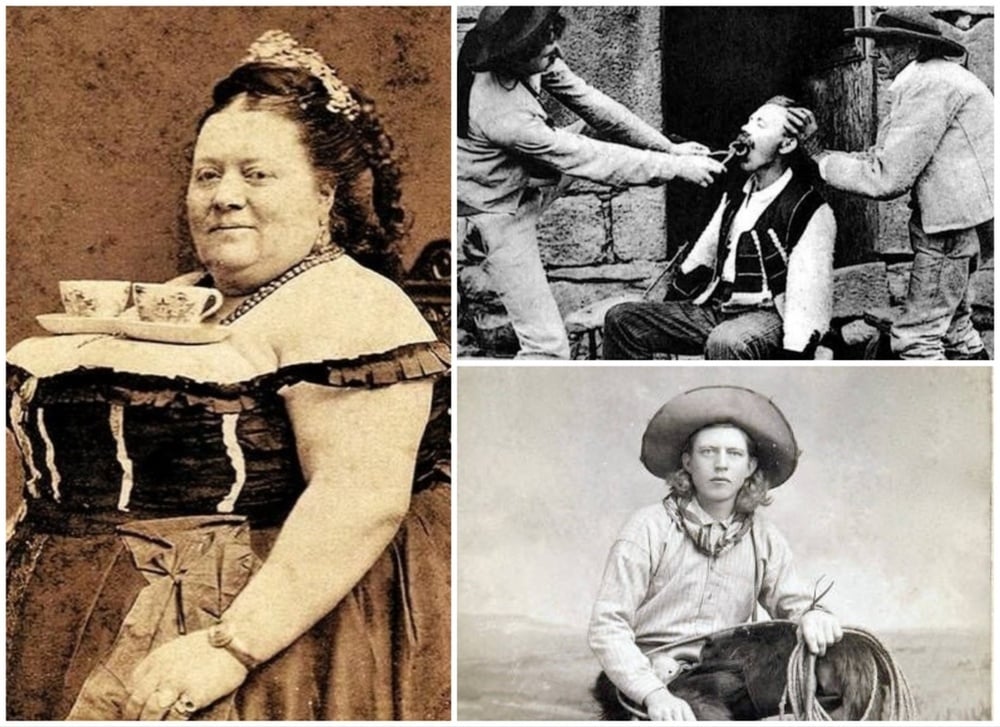
We’re all familiar with the Wild West. Some of us dressed up as cowboys and cowgirls as kids, while some love those classic Western films. But how much of the wild, wild west life are we really familiar with? Living during the time of the American Frontier was not for the faint-hearted. Here are some fascinating facts and strange lifestyle traits...
Various Insects Were a Menace in Wild West Society
Public spaces in the Old West were crawling with a bunch of different critters. The beds of the average person were known to be made from straw and hay.
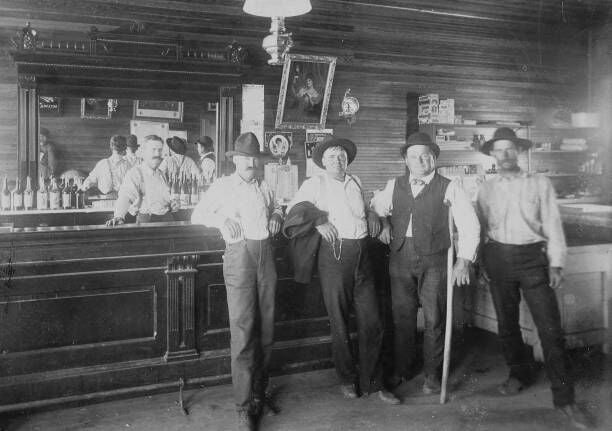
Though better than the floor, these beds were unhygienic and rarely cleaned. They'd become infested with bugs like "seam squirrels" and lice. Insects contaminated food with their larvae, posing a nasty surprise for people. Mosquitoes were also a problem due to poorly insulated structures. Cowboys had to deal with more than just bandits...
Women Set the Bar of Hygiene Higher Than the Men
In the Wild West era, life was challenging, with many individuals living in makeshift settlements or isolated ranches far from established towns. The lack of modern amenities and medicine made hygiene a constant struggle. However, the women used innovative methods to ensure a higher standard of cleanliness for their families and communities...
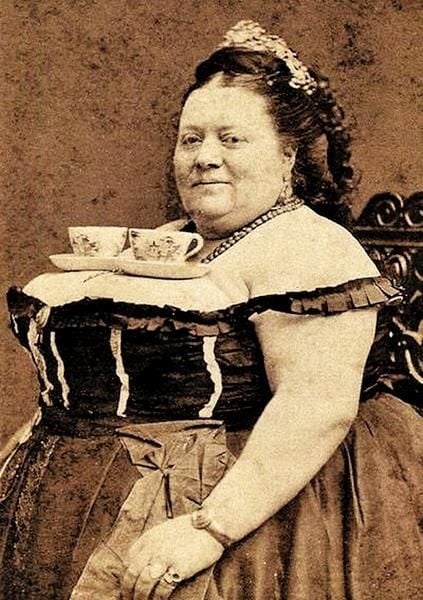
Men of the West spent a lot of time outdoors in the dusty climate and would often go days without a bath. The women were resourceful and adaptive, making the most of whatever was available to them, often using natural resources like herbs and plants for cleaning and disinfecting purposes. They would boil water to sterilize it for cooking, and washing!
Infections Of All Kinds
Another aspect of the cowboy lifestyle that encouraged the spread of diseases is the predominantly male population. Intimate love affairs would regularly happen in pubs, saloons, and brothels, so sexually transmitted diseases were spread freely, without much chance of a cure.
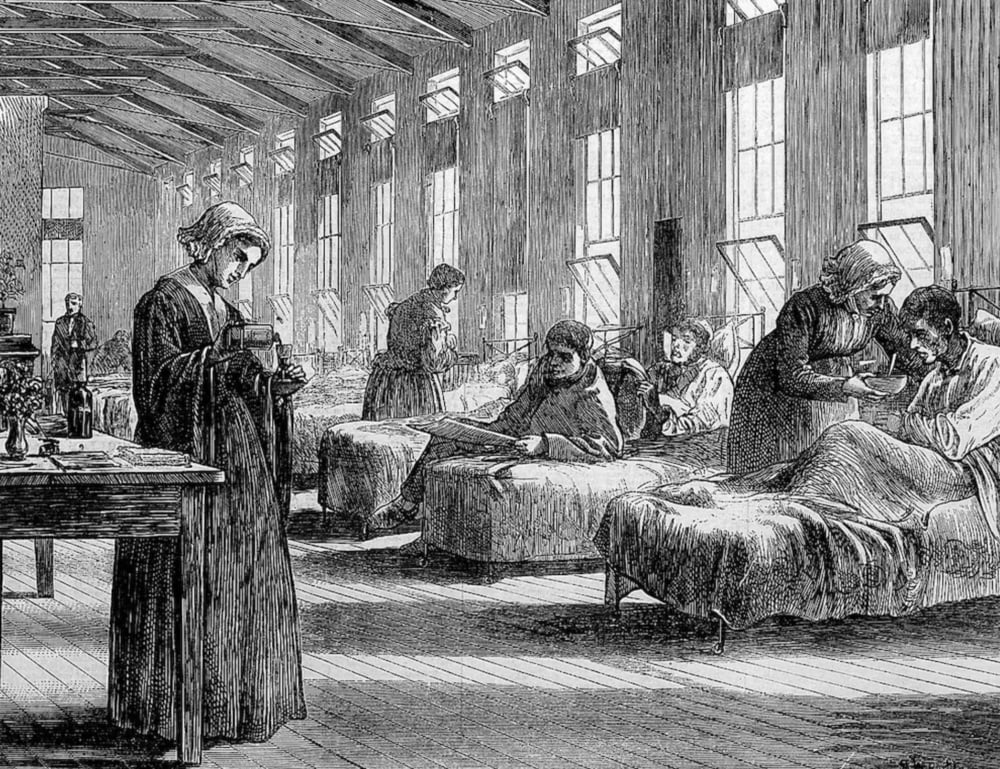
“Using protection” was not a common practice, as most people didn’t even know that these diseases and ailments existed - let alone how they spread. For every bit of love that was indulged, it came at the cost of contagion (and an itch or two).
Getting Creative With Hair Washing
While the societies of the Old West were not particularly hygienic, they sure were creative. The women could get quite inventive and resourceful when it came to washing their hair...
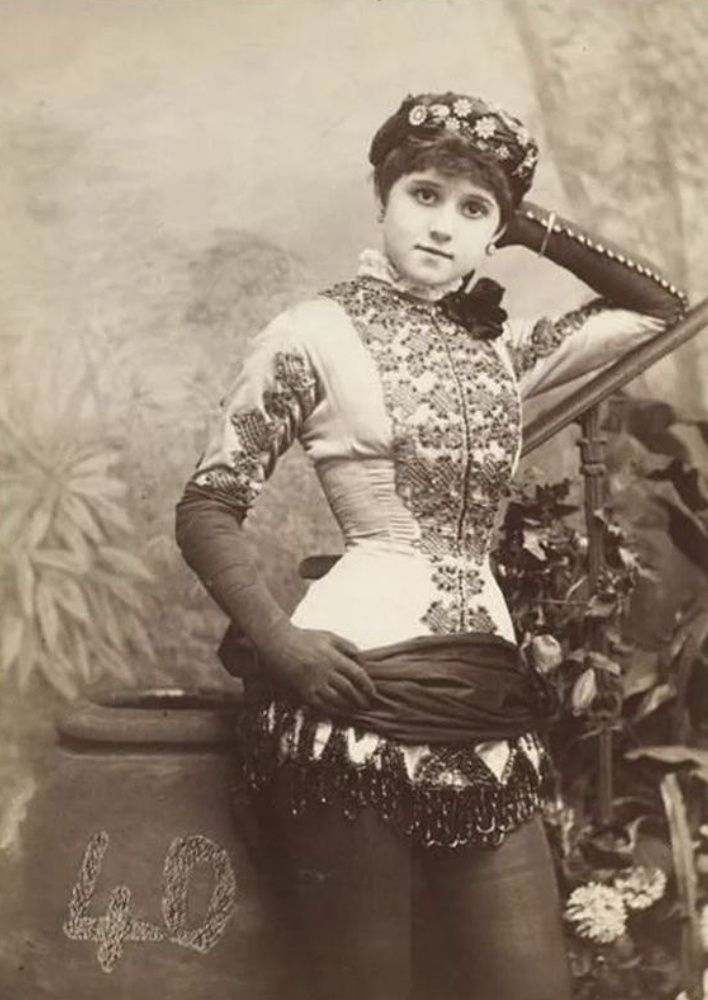
The Wild West women turned to unconventional methods. To wash their hair, the women would either mix whiskey with castor oil or use soapweed, a wild plant abundant in the region, leaving their locks refreshed and fragrant. To set their curls just right, they would carefully warm pencils and delicately twirled around their hair, crafting stunning hairstyles that defied the ruggedness of the frontier.
Their Lack of Bathing Caused All Sorts
Cowboys may have been able to outrun all sorts of wildlife and bandits, but they couldn’t escape the consequences of an unsanitary lifestyle. It wasn’t unusual for cowboys to go weeks - and sometimes even months - without a proper clean. Where water was scarce and luxuries were rare, the lack of bathing facilities introduced many challenges...
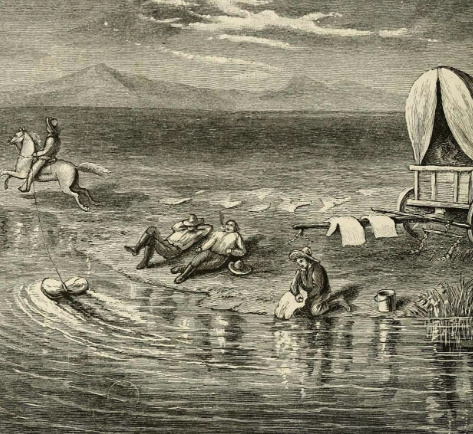
Days spent on a horse saddle and wearing the same clothes caused fungal infections that taunted them in the most sensitive regions – the crotch, buttocks, armpits, and feet. It was not only an eye sore but caused relentless itching and burning that plagued them. The infections, like a domino effect, spread as cowboys scratched and transferred the bacteria with their unclean hands.
Having a Disease Was Guaranteed
By now, it should be very clear that the Wild West society wasn’t the most sanitary. As settlements were cramped and densely populated, it was the perfect breeding ground for infamous germs like smallpox, cholera, and tuberculosis.
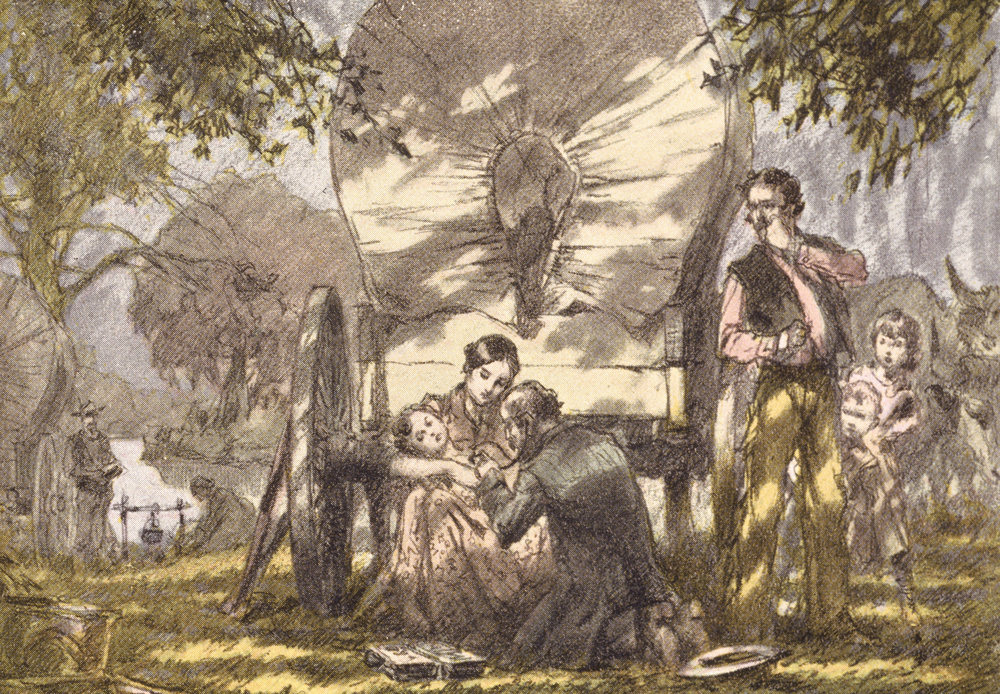
In the harsh reality of the Wild West, cholera emerged as one of the most tragic and relentless illnesses, striking both Native Americans and settlers alike through contaminated water and food. Immunity was rare as the disease wreaked havoc, leaving no community untouched. Settlements grappling with outbreaks became the norm, overshadowing the rare sight of a place in a generally healthy state.
What Is That Horrible Smell?
The cowboy lifestyle involved many hours on the back of the horse, galloping across the country, dodging bandits. When they got thirsty, they'd stop by the nearest town and head to the local bar. However, even though they left their horses outside, they couldn't escape the lingering smell of horse that followed them indoors.

While this rugged scent became symbolic of their adventurous lifestyle, it also carried health implications. The accumulation of dirt and sweat on their bodies, combined with irregular bathing, transmitted diseases. Also, the close proximity to animals exposed them to potential animal-ridden infections, making hygiene even more critical in the unforgiving frontier.
You Could Tell a Lot By a Woman’s Skin Complexion
Today, a woman’s tan can be a wonderfully attractive feature. But during the peak of the Old West, a clear and pale skin complexion was the top desire. If a woman had porcelain skin free of blemishes and freckles—she's a catch! The ladies from upper-class backgrounds would go to extraordinary lengths to attain this look, taking their beauty pursuit to the extreme.
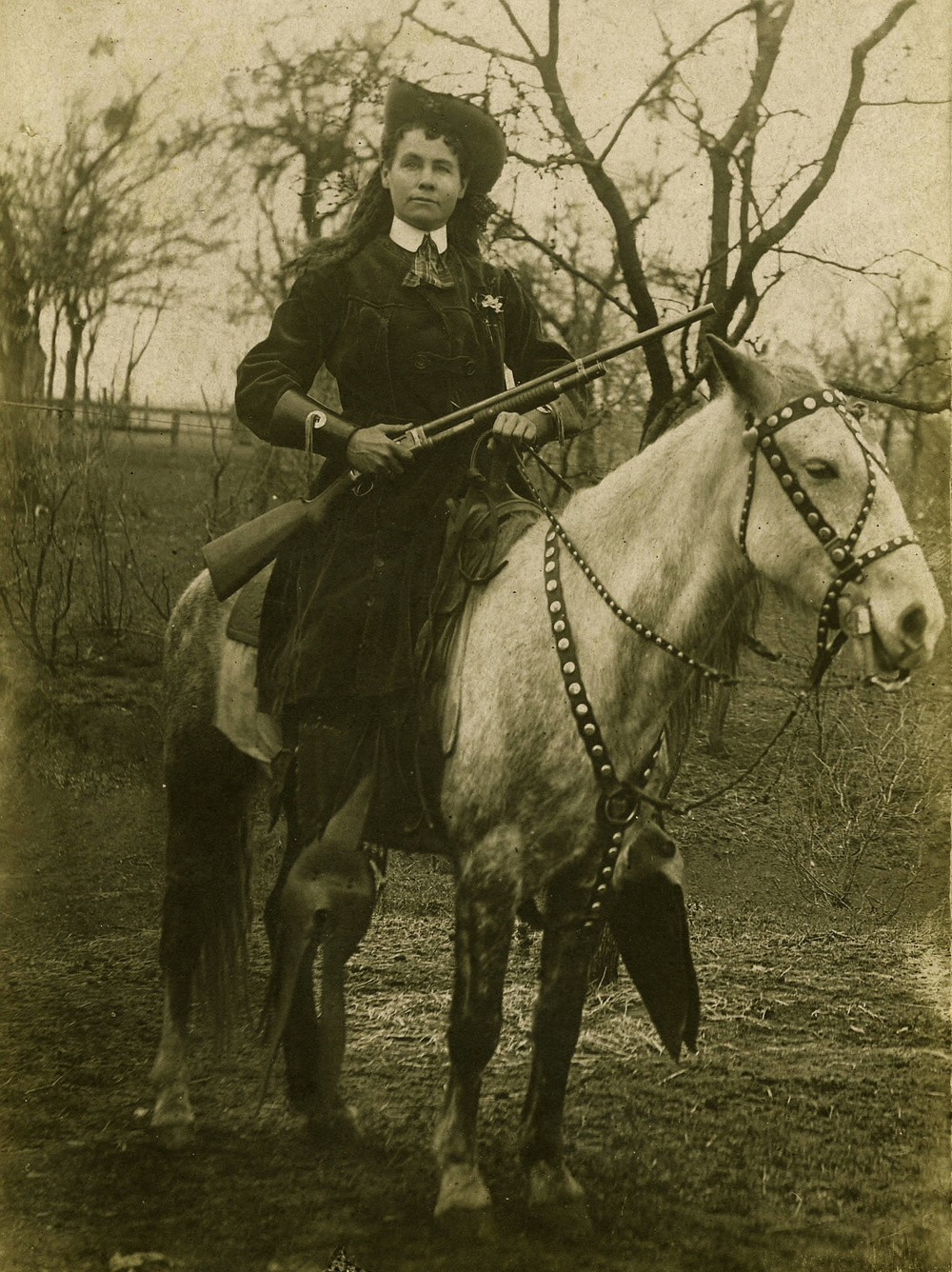
Women would use bleach and go to great efforts = to stay out of the sun. Whenever these women did venture outdoors, they made sure to have their bonnet, gloves, and long sleeves handy to protect the melanin in their skin from getting overly excited.
Clean Water Wasn’t a Guarantee
Did you know that up to 60% of the adult body is made up of water? As you can imagine, this means that water is critical for our survival. While a lot of things have changed over the centuries, this fact of life hasn’t. However, those living in the Wild West didn’t have access to clean water as needed.
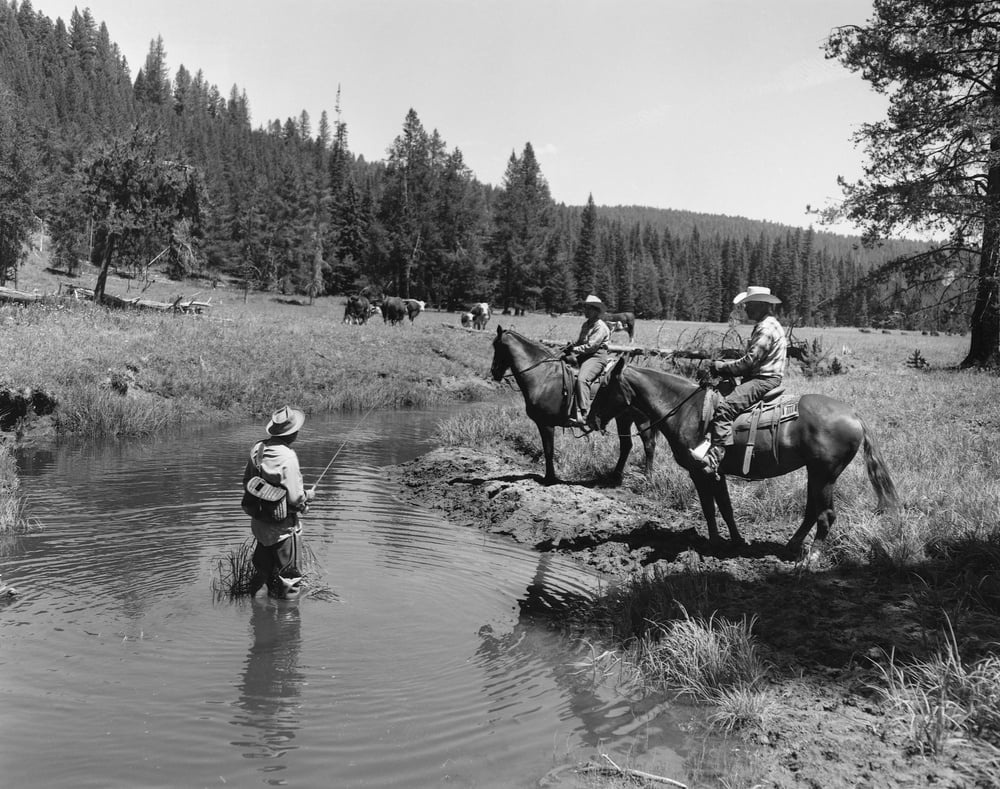
Drinkable water was not easy to come by, and often, dirty water disguised itself as clean. For example, a stream of water could easily have been contaminated by a leaking outhouse. Stagnant water was also undrinkable as it was a breeding ground for insects and often fell in the footpath of horses. The safest bet was collecting rainwater in a cistern - but even this water had a precarious lifespan.
Dental Hygiene Was Well Below Par
Certain attributes can make or break your attraction to someone. A common turn-off point is bad teeth. Unfortunately for those living in the Old West, dental hygiene was a compromise you’d have to be willing to make. It was uncommon to use toothbrushes and toothpaste, and some turned to creative home remedies...
![UNITED STATES - JANUARY 01: Buffalo Bill (1846-1917), actually William Frederick Cody, in his cowboy outfit. Photography, around 1900. (Photo by Imagno/Getty Images) [Buffalo Bill (1846-1917), eig. William Frederick Cody, in seiner Cowboy-Ausruestung. Photographie, um 1900.]](https://media.wazimo.com/images/c5c037bc76f81cfdd1a4dfbb3791496d11f015d48e1a0fa313da1550f49f8b1c.jpeg)
Chewing on tough fibers like licorice root or using rough cloth as makeshift toothbrushes were common practices to maintain some level of oral cleanliness. Also, herbal concoctions were brewed and used as mouthwashes to alleviate pain and combat infections. Nevertheless, rotting teeth and black gaps were common, leading some individuals to perform dentistry on themselves - there’s nothing that a bit of alcohol can’t numb!
The Iconic Kerchief- Not So Effective
Take, for instance, the iconic kerchiefs cowboys wore in the Wild West. While these bandanas symbolized the cowboy spirit, they were also breeding grounds for germs. Cowboys used them to shield their faces from dust, wipe sweat, and even as makeshift bandages.
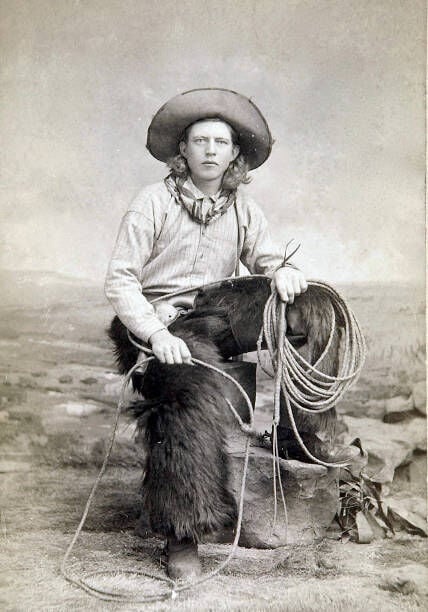
However, frequent use and infrequent washing meant these kerchiefs often harbored dirt, bacteria, and sweat, making them quite unsanitary. In an era with limited access to clean water and sanitation, these multi-purpose cloths were practical yet far from clean, reflecting the gritty reality of life on the frontier.
“Soap” Was a Very Loose Term
Today, most people's shower routine will no doubt involve slathering themselves with some sweet-smelling soap. But days in the Wild West were very different. Instead of soap, people used the likes of “soap-weed” which Mexican women used to wash their hair. The substance was made from the yucca plant and had a wonderfully soft and lustrous effect. But others opted for a grosser cleanser.
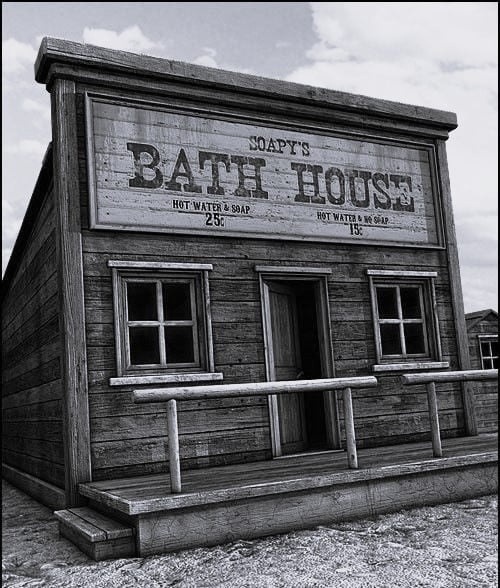
Other settlers used “soap” made from animal fat to clean themselves. Unfortunately, the effects of this soap were less luxurious. Instead, it left the skin irritated. Without proper soap as part of the daily routine, body odor became a common issue. On the plus side, this was an acceptable condition, as overly clean pores had a reputation for exposing the skin to germs and diseases.
Dust Storms Were a Common Occurrence
During the time of the Wild West, dust storms were the equivalent of a natural disaster with the potential of causing devastation. The storms would arise out of nowhere, and cover entire towns in a thick layer of grime and dust. This was horrid from both a cleanly point of view, as well as adding to the risks of health issues and respiratory diseases.
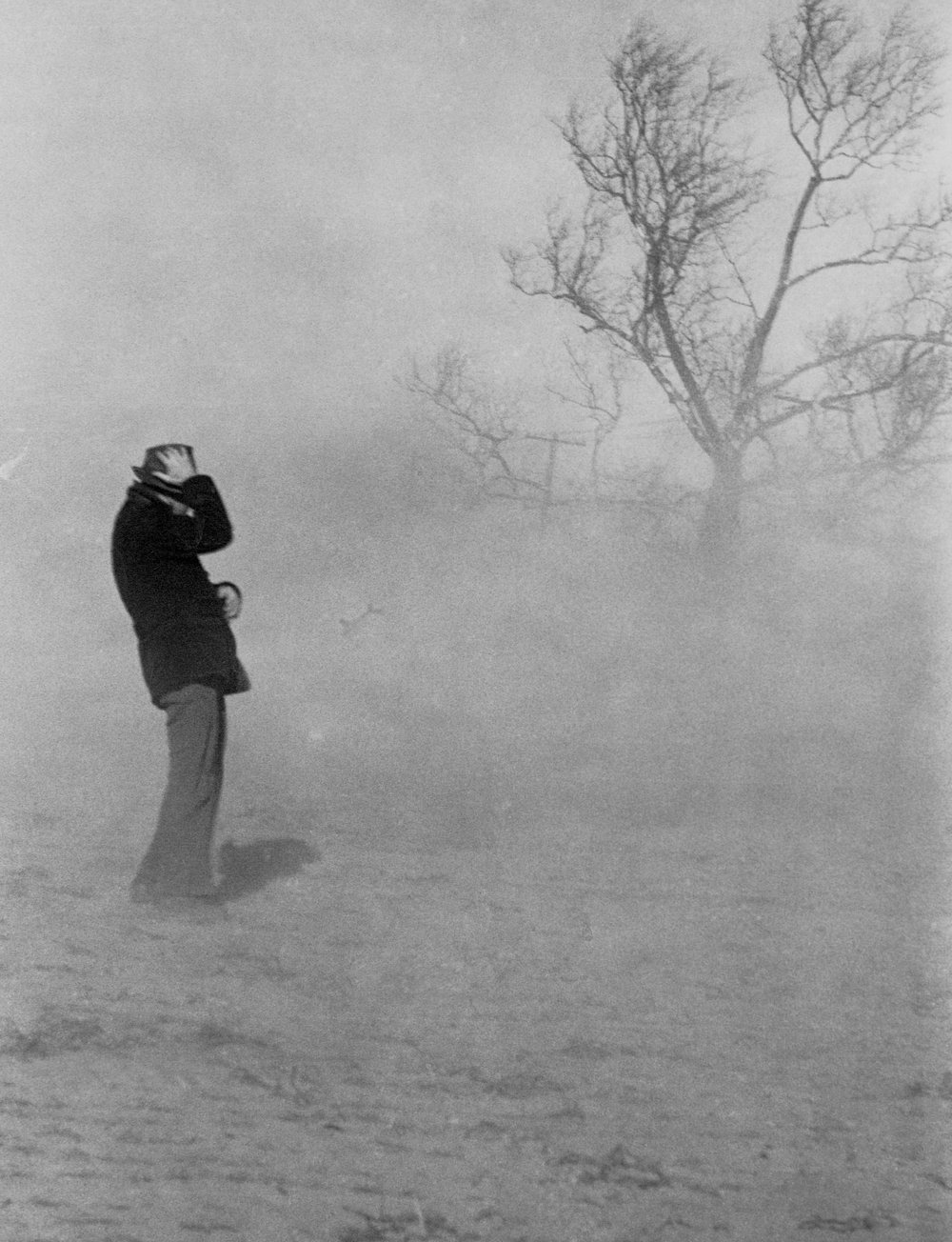
One young girl named Sarah Raymond Herndon traveled the area in the 1860s and had the following memory to share; “Oh, the dust, the dust; it is terrible. I have never seen it half as bad; it seems to be almost knee-deep in places […] When we stopped, the boys’ faces were a sight; they were covered with all the dust that could stick on.” Unfortunately, this dust could not be cleared away with a simple sweep of the broom.
Sharing Is Caring?
When did you last go out for a drink? Chances are that you headed over to the hottest bar, sat down at a comfortable bar stool, and looked at a menu of tasty indulgences. Bars in the Wild West were incredibly different. For starters, there were no stools to grab a seat on. Instead, the bar had rails to prop up a foot and relax. On the top rail, there were hooks to hold towels.
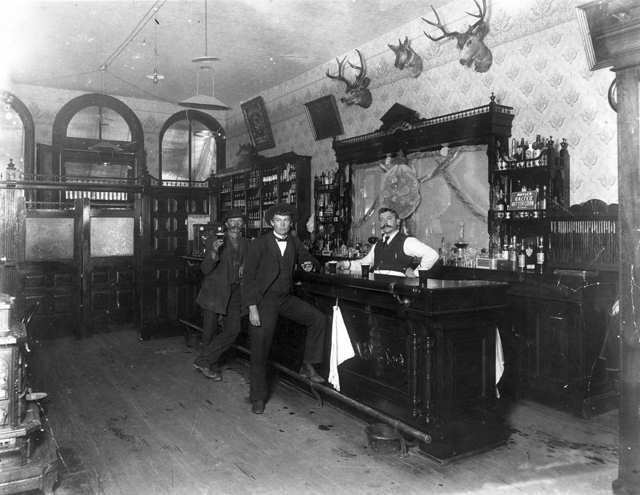
These towels were intended to keep the space clean by wiping beer from the mouths and beards of the men. In reality, the towels were horrifically unhygienic. The towels would be shared between countless patrons, rarely washed, and provided quick access to various germs and diseases.
Outhouses Offered an Unhygienic Experience
A trip to the loo was not always as easy as walking to the next room and politely closing the door behind you. Back then, the “bathroom” was a shed that was built to cover a hole in the ground. These fecal depositories were built close to the home and used until the hole became full, after which the outhouse would be moved to another spot.
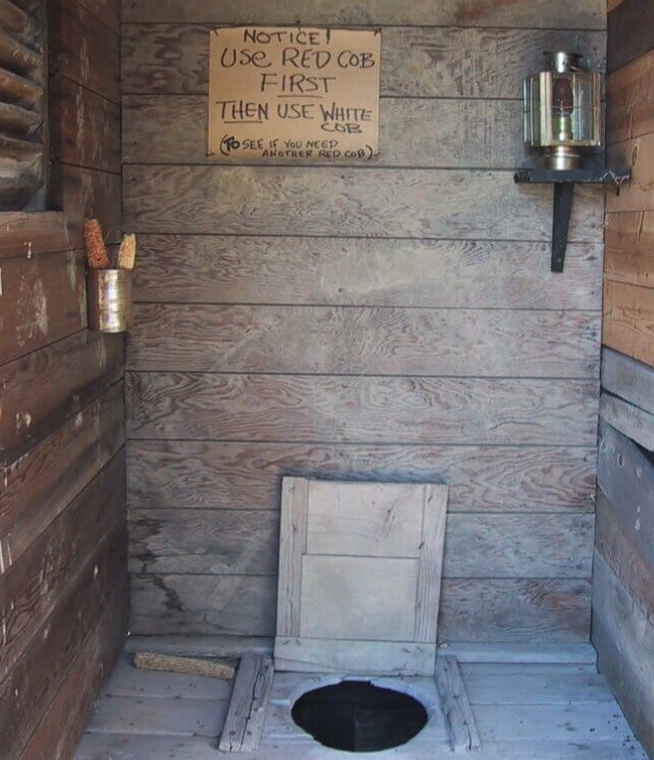
It wasn’t only the unhygienic structure that was off-putting, but the smell also attracted insects and served as a breeding ground for diseases. Without the technological advancement of toilet paper, the experience of going to the toilet was worsened by people using leaves, corn cobs, and grass to clean themselves after relief.
The “Elegant” Life of a Saloon Girl
It’s no secret that brothels were popular establishments in the Wild West. But don’t confuse the role of a saloon girl with that of a prostitute. Saloon girls would give these lonely men some attention by dancing, singing, and socializing with them in saloons. The extra money that the cowboys spent on gambling and drinks was a bonus. Unlike prostitutes, saloon girls were considered to be “ladies”.
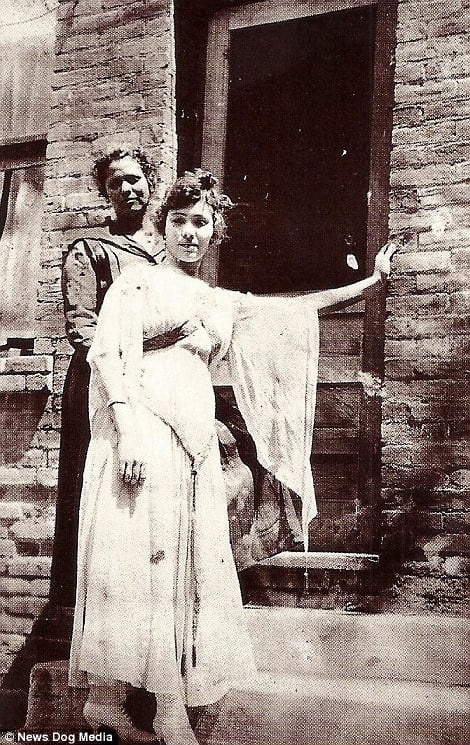
Saloon girls, symbols of this era, lived harsh lives marked by poor hygiene. These women, often lured by the promise of money, worked in environments reeking of sweat, alcohol, and tobacco. Limited access to clean water and basic sanitation made regular bathing a luxury, leading to prevalent diseases. Their attire, though glamorous, was rarely cleaned, contributing to the overall filth. The saloon girl's life was far from glamorous; it was a struggle for survival amidst the grime and grit of the Wild West.
A Hairstyle Transformation - For the Men
As mentioned, it wasn’t unusual for men of the West to have long locks and facial hair that added a masculine edge to their appearance. However, at the turn of the 19th century, hygiene products became more readily available and so began the transformation of men’s hairstyles.
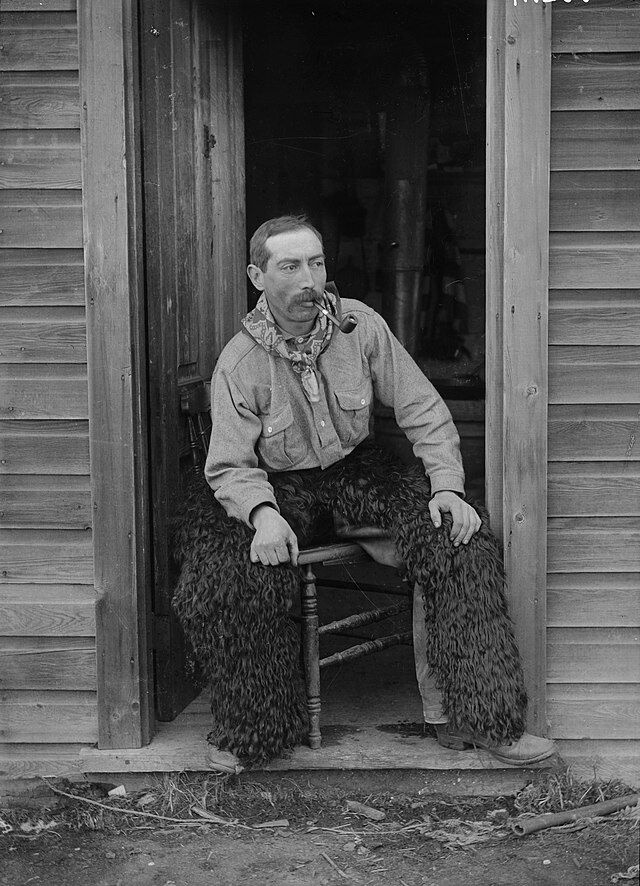
With new hair care products bubbling to the surface, men began to understand the hygienic risks of having long (unkempt) hair. It wasn’t long before men started to cut their hair and shave their faces, sporting a clean-cut, smoldering look.
The Diet in the Wild West Wasn’t as Bad as You’d Think
With so many unhealthy lifestyle habits, it’s tough to think that frontier cooking in the Wild West was anything enjoyable. But the diet of the Wild West was surprisingly good. The food was largely dependent on the season and terrain. For example, indigenous plants provided plenty of nutrition, as did rabbits, buffalo, and other animals in the area.
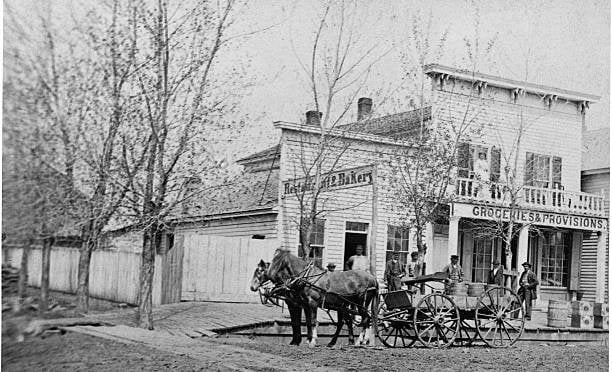
Dried provisions, such as flour, beans, and sugar, were not as easy to come by, but they were taken full advantage of whenever possible. Members of society would use the likes of dutch ovens, frying pans and boiling pots to cook up a meal. As the settlements grew, so did the variety of food, recipes, and cooking utensils.
The Dirty Habit of Spitting Tobacco
First, it wasn’t uncommon for men in the Old West to chew lazily on tobacco, and then spit once the build-up of saliva becomes too much to fit in their mouths. People chewed tobacco to keep their mouths moist while strolling around in the dry and dusty fields.
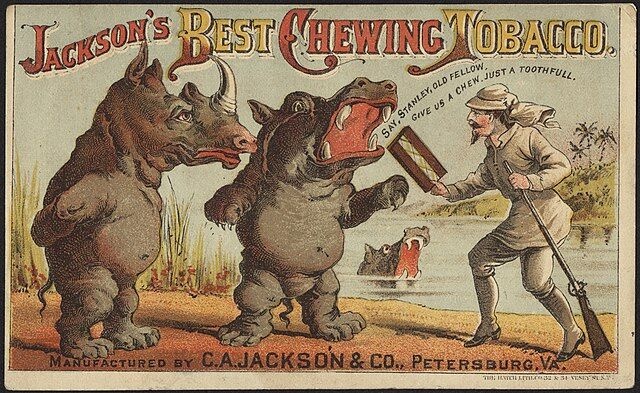
However, what many people don’t know is that men would spit directly on the floor of the saloon, in spitoons that lined the bar. These spitoons were filled with sawdust which was a health risk in their own right.
The Cowboys Protective Gear Included an Item Particularly Unique
The cowboy getup included a lot more than just their sexy hats, checkered shirts, and protective bandanas. Cowboys would also slip into their chaps before hopping on a horse. While their pistols kept them safe from outlaws, their chaps prevented a rash developing from their legs rubbing on the horse, as well as the thorns from the brush.
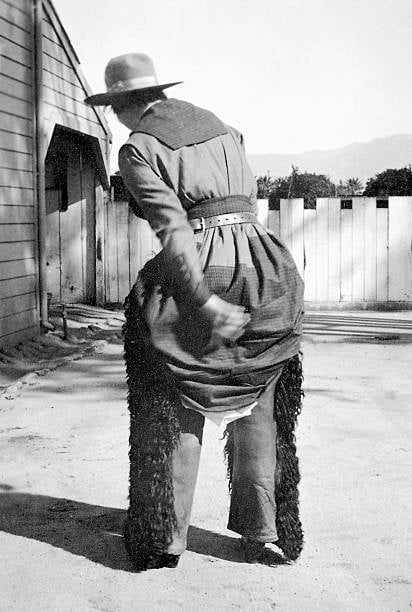
Made from leather or suede, these “leggings” were buckled to the trousers for easy dressing. Although the style may have adapted slightly over the years, many horse riders still were chaps today.
Entry Into Drinking Club Came at a Hefty Cost
Entertainment options were few and far between. There was no ice rink, cinema, or shopping mall to kill time. Instead, cowboys would frequent the saloon and drink themselves silly. The bar became a source of fun where many memories were made - and then subsequently forgotten.
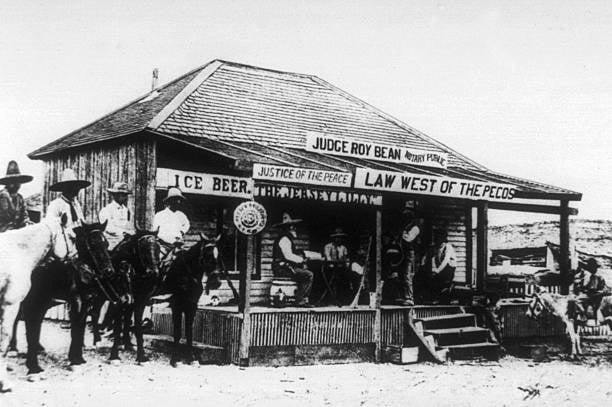
A popular drink of choice was “whiskey” made up of burnt sugar, alcohol, and chewing tobacco. This drink was incredibly powerful and given the nickname “firewater” as cowboys would light it on fire. Another favorite drink was cactus wine, made with a combination of tequila and peyote tea. Both of these drinks packed a punch - and caused many cowboys to throw a punch too. It wasn’t uncommon for bar fights to break out and sometimes even lead to death.
Shows Were the Entertainment Alternative to the Saloon
Drunken nights at the saloon were not the only way to stay entertained. Live shows were a popular activity that brought the masses together. One particularly popular show was Buffalo Bill’s Wild West Show.
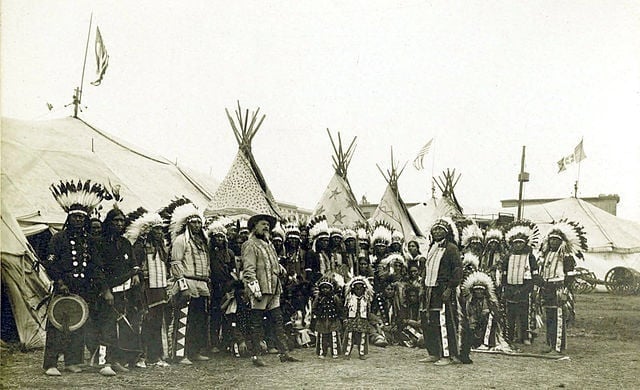
The former Pony Express rider was a soldier and buffalo hunter before he put his business mind to use and created a roaring success. The shows would travel across the United States, portraying highlights of life in the Wild West. The shows were such a hit, that they even ventured to parts of Europe.
A Breakdown in Law and Order Led to The Wild West
Life during this time was not easy by any means. Eventually, the ambition of the pioneers who first arrived in the east decided to venture further west. However, they could never have expected what was to come. For starters, the Native Americans didn’t make it easy. The road to the west was paved with brutal confrontations and resistance by locals who were protecting their land from invasion.
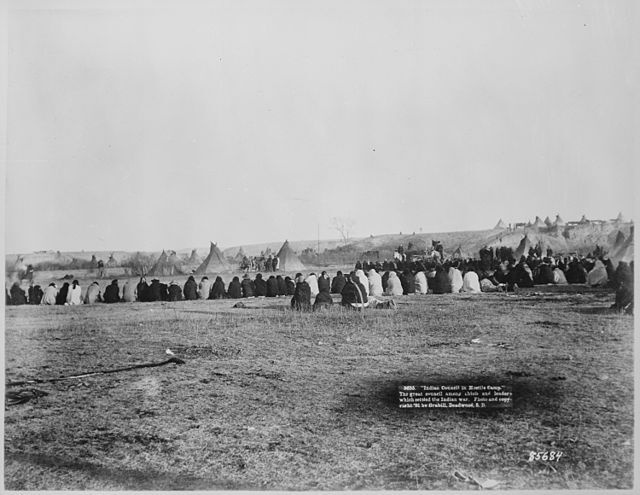
The cowboys decided to take matters into their own hands, breaking down the lines between law and order. It was out of this behavior that the name “Wild West” was born. This was a continuation of the previous American Indian Wars where the battle for land became heightened.
A Picture Is Worth a Thousand Words
The internet was not even an inkling of a reality in the Wild West, but the frontier society had a fantastic way of spreading information. As law and order was a debatable topic, one of the only ways to keep outlaws in check was to circulate images of their punishment - especially when they were dead.
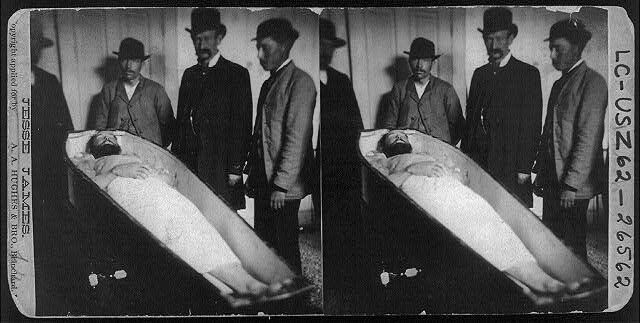
Not long after death, a corpse would be propped up on the wall and have its photograph taken. This image would circulate through the settlement as a warning to future and existing bandits. Bounty hunters would also take a picture of the deceased to prove that they were no longer alive (and get their reward).
Texas’ Plains Had Camels as Well as Horses
Another iconic image of the Wild West is a cowboy sitting on the back of a horse. However, in reality, there were a fair number of camels roaming the plains as well. With the Texas landscape being so similar to that of the deserts in Egypt, it makes perfect sense to know that the U.S Camel Corps established in 1856 was successful.
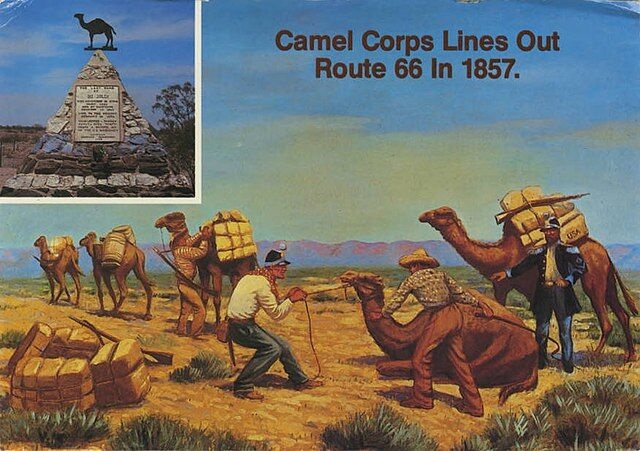
A total of 66 camels were imported from the Middle East to Camp Verde in Texas. During the American Civil War, these camels were captured and sold to the circus, while others managed to run away to the desert. No one is sure what happened to these humped beasts, especially after the last reported sighting in 1941.
The Wild West Was the Birthplace of a Lucky Omen
Certain images are associated with significant messages, especially for superstitious people. One of these omens is that of a horseshoe, which is symbolic of good luck. This lucky charm was first used in none other than the Wild West.
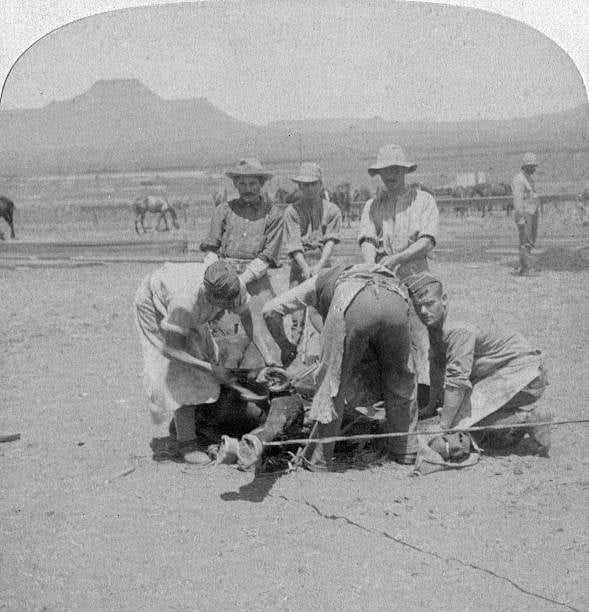
Horses played a critical role in society of the time. They were used for transport, working on the ranches, and as an image of luck. Nailing a horseshoe above a doorway (or on the mast of a ship) was said to ward off evil spirits. Even those that didn’t believe in evil spirits did believe in the horseshoe as a lucky charm.
Cowboy Lingo Is Still “Above Snakes” Today
The Wild West was a world of its own, with people developing a unique culture, lingo, and set of rules. Much of this lifestyle is still around today, particularly the choice of language. For example, “bellyaching” means to complain, and “hankering” refers to the desire for something. Not to mention “fandango” which is a term derived from Spanish and means a big party.
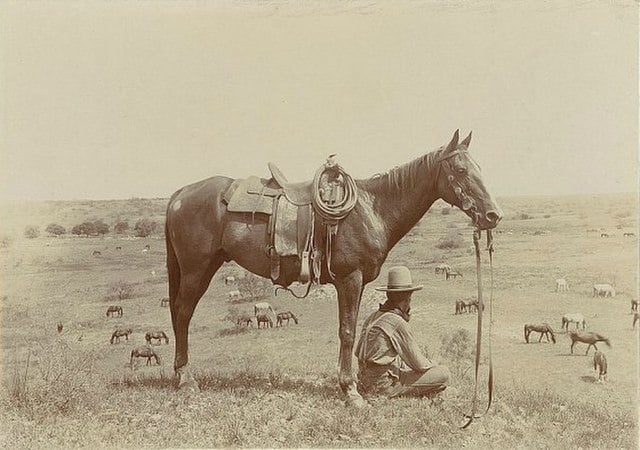
Every bit of present-day society is impacted by the past, and the America of the 21st century is no exception. The English language is scattered with unique vocabulary that has been passed down from the Wild West.
Many Towns Were Built Around Mining
The California Gold Rush was not the only of its kind. Mining became a common attempt at livelihood across the country, including Virginia City, Nevada. Mining came to play such a vital role in the economy, that it provided countless people with jobs.
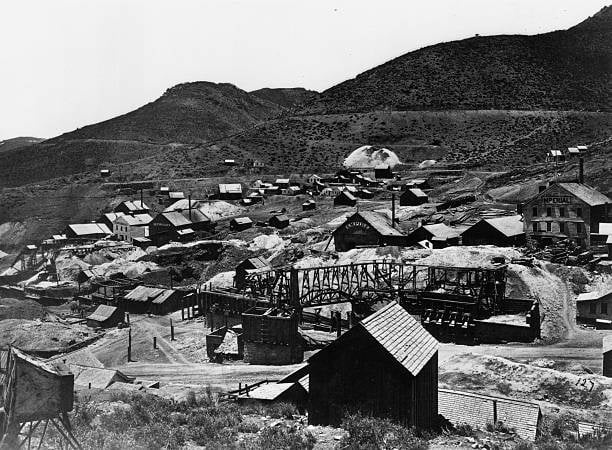
Areas that were known to be rich in minerals would attract people from all over the country to mine their resources. As a result, the town’s population would grow. But natural minerals are a limited resource and as these materials would disappear, so would the cities fall apart. Life was tough in the Wild West.
The Frontier Settlements Were More Racially Diverse Than Anticipated
The stereotypical cowboy is rugged, white, and male. But what many people don’t realize is that there were plenty of African American cowboys. One in every four cowboys were African American, and they were no different from their white counterparts. All cowboys did the same job - herd cattle, work on the ranch, tame horses, and feature in rodeos.
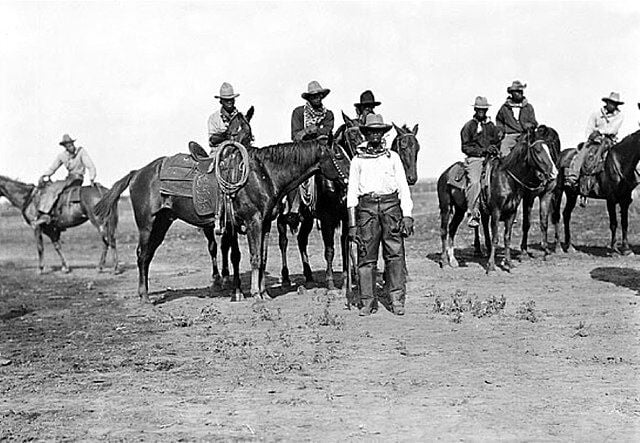
In hindsight, it's estimated that there were roughly 5,000 to 8,000 African American cowboys that played pivotal roles in cattle drives in the 19th century. The assumption is that these cowboys were first brought over as slaves, but paved their own lives for themselves.
Men Would Pride Themselves on Their Long Locks
Anyone with long hair will know the value of a hair tie in the middle of a sweltering day. The feeling of sweaty, damp hair on your neck inspires a unique type of claustrophobia. Temperatures in the Wild West could get toasty, and we’ve already touched on how dusty and unhygienic the time was. This makes the fact that long hair was a popular style on men all the more interesting.
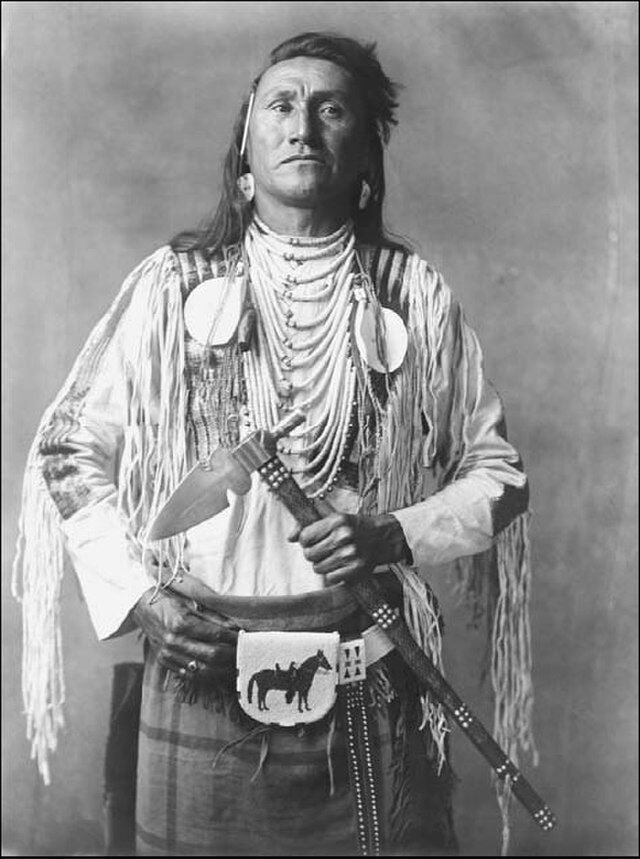
If you look closely at the behavior of the cowboys, you’ll realize that while many of the notable figures had long hair, it wasn’t necessarily a lifelong ambition. Many of the cowboys would indulge in a trim, a bath, and a shave when coming into a new town after a while in the saddle. But would let their hair grow out on the road.
The Wild West's Main Characters
A Legendary Cowgirl Flaunts Her Medals
May Lillie lived during a time when males dominated all aspects of life, and a woman’s role was mostly associated with prostitution and delivering babies- but not May Lillie. Born in 1869, the American sharpshooter and equestrian was a renowned performer.
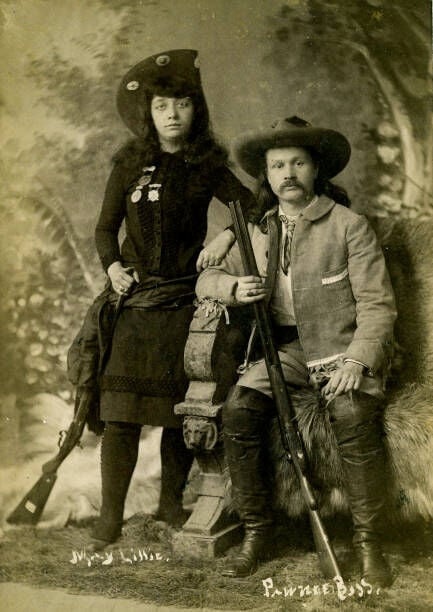
In this photograph, snapped around the 1890s, May Lillie stands alongside her husband, Gordon Lillie (whose stage name was Pawnee Bill). Her medals drape around her neck and she stands proudly alongside her rifle. That’s one power couple that we don’t want to upset!
Jesse James, the Legendary Outlaw of the Wild West
The lack of law during the Wild West allowed criminals to run free and hurricane through communities — pillaging people and places as they went along. Of all outlaws, Jesse James is one of the most infamous, earning a terrifying reputation in the process.
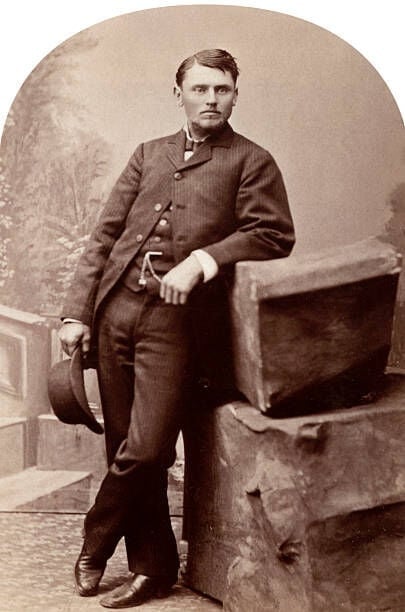
This photograph, taken circa 1875, shows a clean-shaven, presentable gent. But looks can be deceiving and behind the lens, Jesse James was a gang leader, bank robber, train robber, and murderer who ravaged the state of Missouri.
A Regal Apache Leader
Have you ever seen a photograph that demands respect in the same way that this one does? Geronimo was a prolific Apache leader who lived from 1829 until 1909. Known for his fearless resistance, Geronimo stood his ground and did his best to protect his people against the threat of removal from tribal lands.
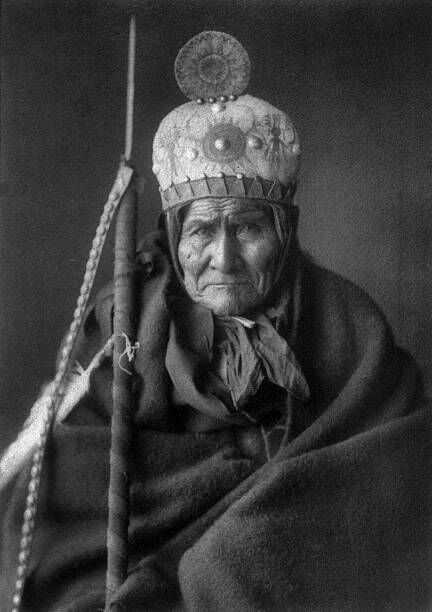
In 1905, photographer Edward S. Curtis had the honor of photographing the medicine man and the end result is nothing short of astounding. Even in his old age, Geronimo exudes awe and inspires respect.
A Show That Attempts to Depict Reality
Wild West shows were traveling vaudeville performances that served as the main form of entertainment from 1870 to 1920. Pictured here is American showman William Frederick Cody, notoriously known as Buffalo Bill, who was a leading showman during the Wild West era.
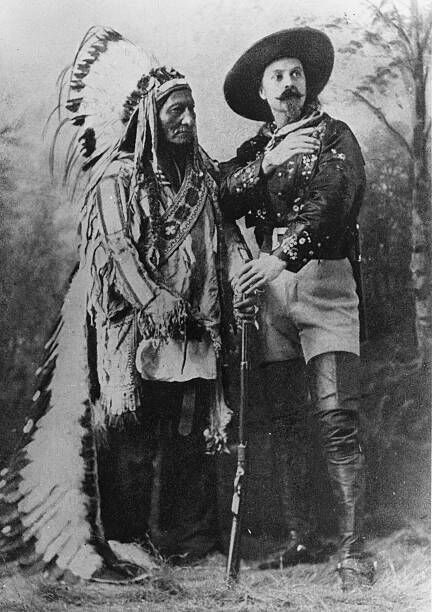
Alongside the American entertainer is the Sioux leader Sitting Bull, who was one of the main attractions in the show. With the show's intention being to reveal life in the American West, we can only imagine how Sitting Bull’s scripted performance differed from his daily experiences…
When the Interpreter Becomes Family
Can you imagine the initial shock of Native Americans when they first came across English-speaking white folk? Everything about the encounter was foreign — from the language and the culture to the dress code and traditions. With this in mind, it’s not surprising that some people learned to communicate in both languages to bridge the communication gap.
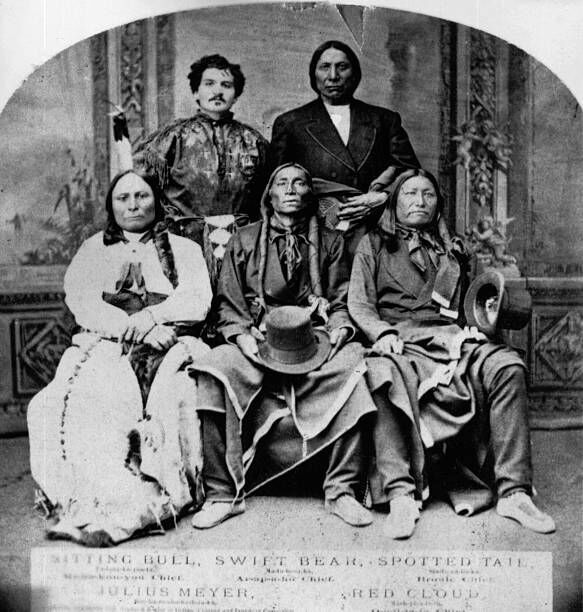
In this photograph, four Native Americans pose together with their interpreter. Included in the end result are interpreter Julius Meyer, and American Indians Red Cloud, Sitting Bull, Swift Bear, and Spotted Tail. We can only imagine how close the group became!
Teenaged Mill Girls
More often than not, children were put to work and conditions were not always the friendliest. During the time before Children's Labor Laws, they were underpaid or not paid at all and many were poor or came from disadvantaged homes.
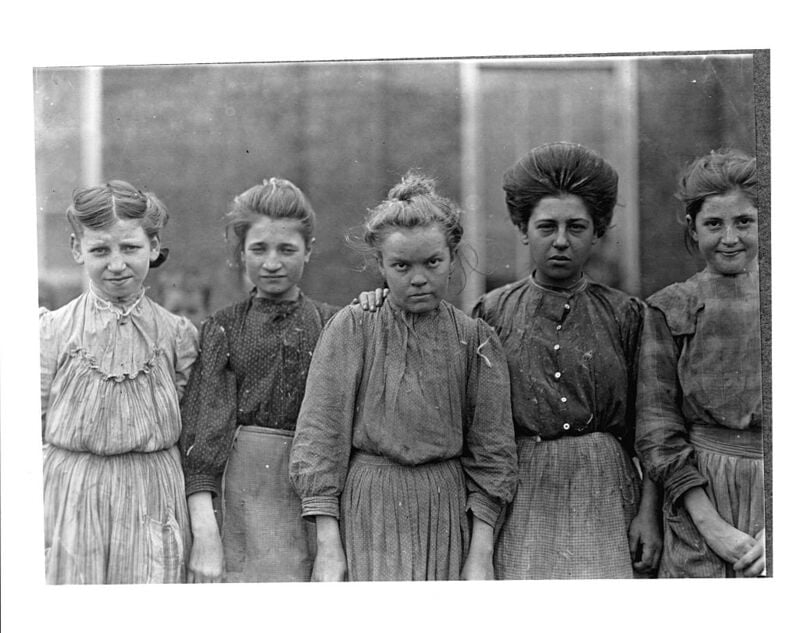
These are some of them. Teenage girls, some still very young, who are working in a cotton mill in Macon, Georgia. They even still have cotton lint all over them after a long day's work.
The Mother of Outlaws
Most people have heard of Jesse James, notorious American outlaw, bank and train robber, and leader of the James-Younger gang. Lesser known but equally as dangerous was his brother, Frank James. The pair wreaked havoc and ignited terror during the Wild West era, and the woman in this photograph gave both of these men life…
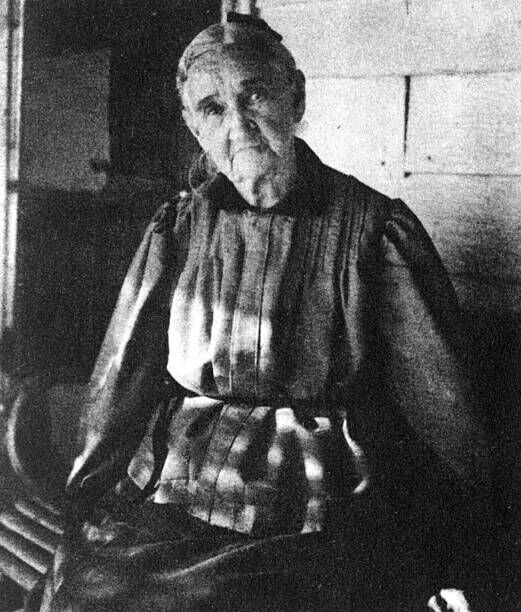
Zerelda Samuel was the mother to both outlaws, raising her eight children in the farmlands of Missouri. In her prime, Zerelda appeared as a strong, privileged woman but as this picture shows, the stress of having outlaws as sons will undoubtedly start to show.
Till Death Do Us Part
The Wild West is not limited when it comes to dramatic stories involving love triangles and violent endings. Cowgirl Calamity Jane and Wild Bill Hickock were both famous in their own right, and they crossed paths throughout their lives. The sharpshooter storyteller was allegedly in love with the law enforcement officer — but he denied a romance.
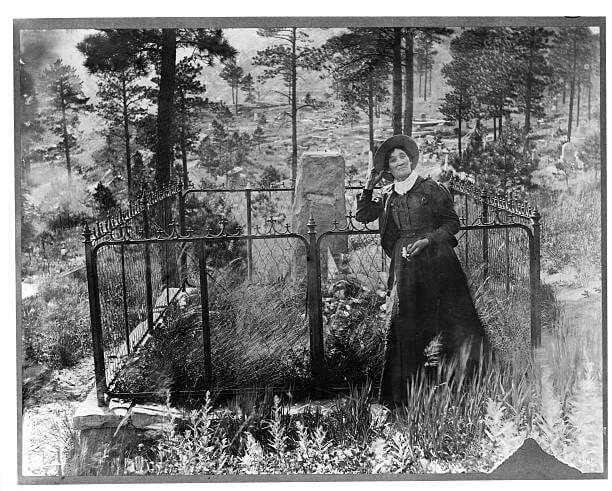
In this photograph, Calamity Jane poses at Wild Bill Hickock’s grave. Although there is no evidence of a romance, she claimed that he was her lover and would be buried next to him in 1903. Judging by this picture, she seems rather thrilled with the idea!
Saloon Girls in the Wild West
Saloon girls are another Wild West stereotype, conjuring images of voluminous hair, sultry corsets, and wooden staircases leading to a good time. However, the real story behind working as a saloon girl is a lot more dramatic and intimidating. For example, most saloon girls were refugees from farms or mills. And in the case of Lola Montez — from Ireland!
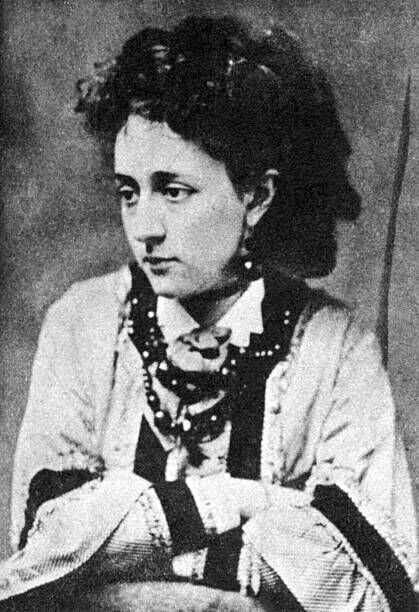
The Irish-born dancer and actress had a very complicated and well-traveled life to her name. By the time this photograph was taken circa the 1850s, she was performing for communities during the peak of the Gold Rush. Her legacy is long and intricate — and could fill an entire book!
Two Outcasts Unite for a Photograph
Stories from the Wild West are filled with harmful stereotypes and scripted narratives, but not everything is as it seems. While most cowboys appear as white men, historical records suggest that there were a lot more cowboys of color than you may think!
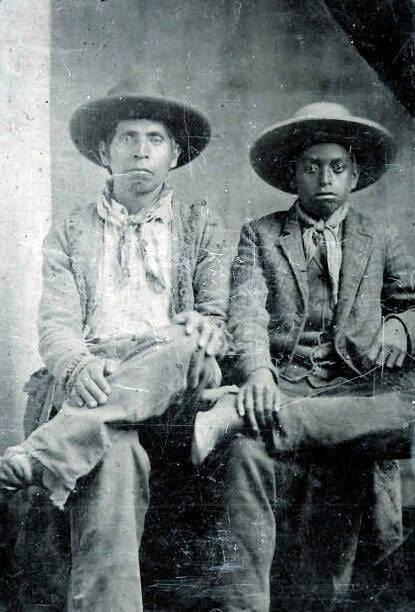
Take this photograph from circa 1865 as an example. A Native American cowboy sits alongside an African American cowboy. If you find the image startling, it’s probably because Native Americans have been typecast as violent, primitive individuals. While images of Native American cowboys are rare, this photograph proves that history is more complicated than we suspect.
A Snazzy Representation of the Wild Bunch
There’s power in numbers, and the Wild Bunch dominated the Wild West by working together as a terrifying outlaw gang. Pictured here are News Carver, Kid Curry, Sundance Kid, The Tall Texan, and Butch Cassidy. Of course, these are not their real names.
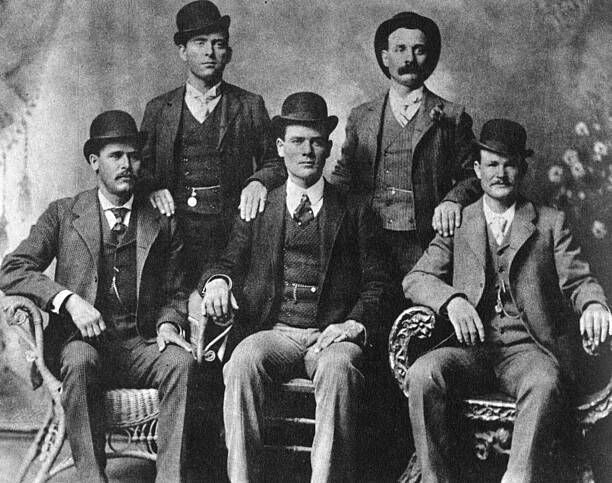
The group of bandits used Wyoming’s Hole-in-the-Wall Pass as their base until 1901 when Butch Cassidy and Sundance Kid made the escape to South America. News Carver was shot by lawmen, the Tall Texan was captured and jailed, and Kid Curry was killed in a gunfight. This photograph is one of the only images taken of the group together!
Wild West Law Enforcement
As the outlaws and bandits ran amok, law enforcement had the difficult job of cleaning up the mess. Photographed here is a U.S. Marshall with a badge of Newton, Kansas. The strapping gent is a clear depiction of what law enforcement looked like circa the 1890s — armed and ready for business.
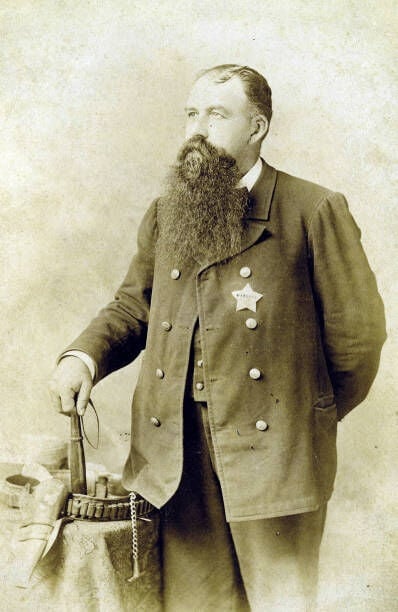
The Wild West sheriff’s badge is an iconic part of the costume, and the rest of the getup in this studio shot is equally classic — from the gun belt and holstered revolver to the smug look of authority.
An Iconic Setting in the Wild West Era
The California Gold Rush was a milestone in the history of the Wild West, contributing to the industrial and agricultural development of the area, and spurring economic growth. This photograph of the Gold Hill mining camp in California is one of many camps in the region.
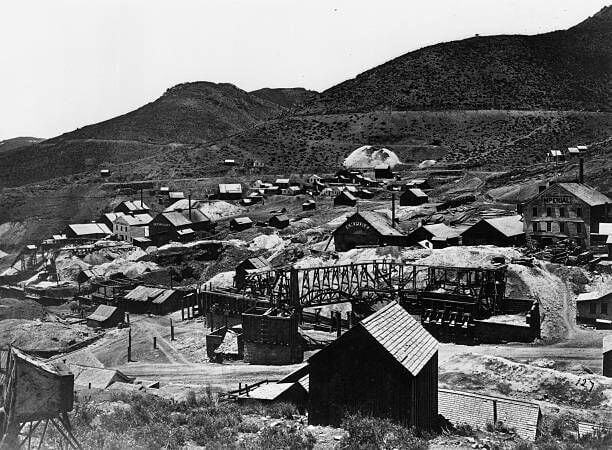
Not only does the photograph reveal the mining infrastructure used during the Wild West era, but also the architecture and natural landscape that surrounded the hub of the action. We can almost see the community going about their daily lives in our minds!
A World-Renowned Rodeo Star
US rodeo star Annie Oakley famously said, “I ain’t afraid to love a man. I ain’t afraid to shoot him either.” No words could better describe the highly skilled trick shooter who could give any man with a gun a run for his money.
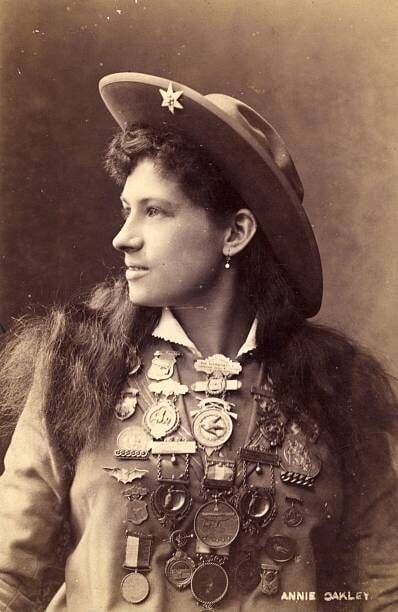
Born in 1860, Annie Oakley became a prominent figure in the Wild West long after her death in 1926. Traveling with the Buffalo Bill Wild West Show, her name was spread far and wide. Annie Oakley’s undeniable success as a marksman and defiant personality is clearly expressed in this portrait!
A Different Side to Annie Oakley
Without the medals hanging around her neck and her long cascading hair, we’d almost think that this photograph could be of our local high school teacher. In the previous picture, we saw a tough and intimidating version of Annie Oakley. In this photograph, snapped in 1922, she appears a lot more approachable and gentle — even when armed with a gun!
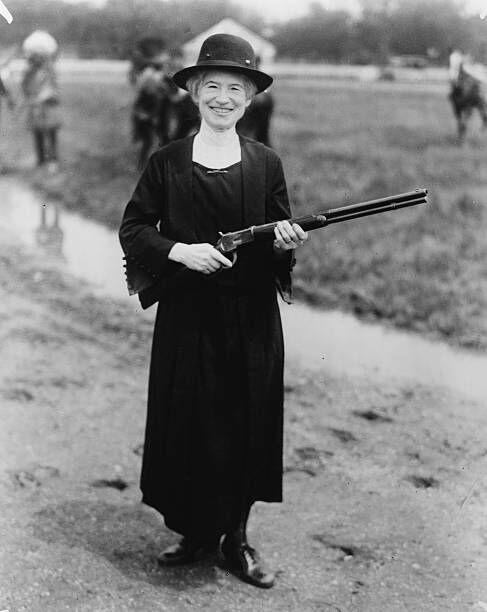
Born Phoebe Mozee, the rodeo star and sharpshooter found immense fame and success under the name Annie Oakley. To this day, her legend continues and her name is used to describe various colloquial terms — such as a free ticket in American baseball.
Buffalo Bill Holds Himself With Poise
Many of the Wild West legends found fame while touring with the man in this picture — Colonel W.F. Cody. Better known by his stage name, Buffalo Bill, the showman hosted cowboy shows around the American Wild West, but that’s not all that he did.
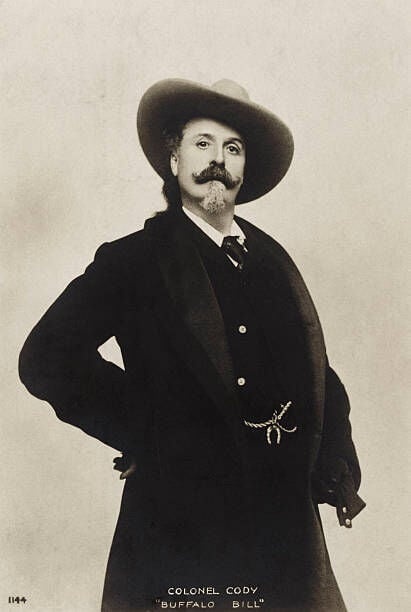
Buffalo Bill was also a renowned bison hunter and soldier. Between 1867 and 1868, he hunted buffalo to feed construction crews on the railroad, allegedly killing 4,280 head of buffalo. Well, that explains where his nickname comes from!
A Typical Sighting of a Cowpoke on the Ranch
There are a few powerful images that represent the Wild West lifestyle. From wide open plains and swinging saloon doors to bandits in their bandanas and cowboys on horseback — each visual is as powerful as the next. Setting the perfect example is this photograph of a cowpoke on the ranch circa the 1890s.
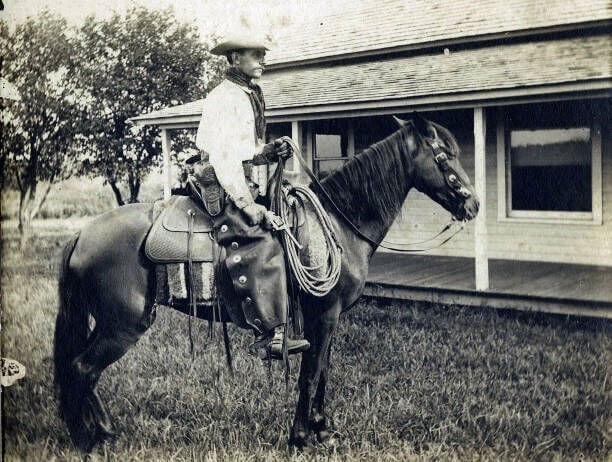
The young cowboy has posed in front of a ranch porch, appearing ready for action. His heavy leather claps prepare him for long hours of riding and his side pistol is ready to pull out on a whim. At the time, cowboys like him were a common (and delightful) presence.
A Group of Cowboys at a Roundup
Throughout the year, cattle are left to graze on the open plains. Each spring and fall, cowboys from neighboring ranches get together to round up the cattle and separate them according to owners and mark their own. This photograph, taken in 1880, depicts a typical scene of cowboys at a roundup.
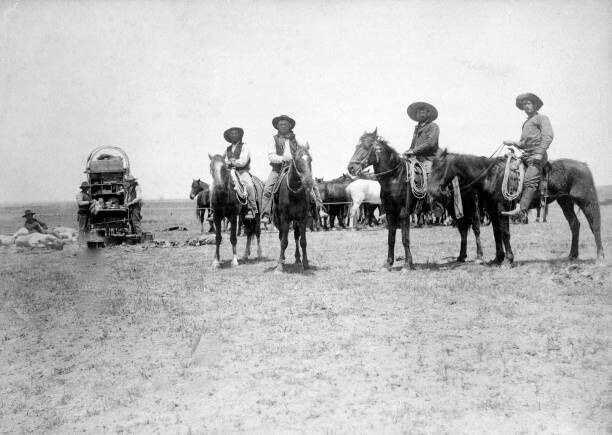
Located at the 3-C ranch, four cowboys watch over a group of nearby ponies. Another two cowboys work the chuck wagon in the background, while another relaxes on a collection of bed rolls. Once the new calves have been branded and cattle have been selected for the market, then the beasts will be left to roam free again.
Introducing Lone Star May Mackey and an Unknown Cowboy
Along with the likes of Annie Oakley and May Lillie, May Mackey was a favorite Wild West performer. Yet little is known about the star, and even less is known about the unidentified cowboy that sits alongside her in this photograph (taken in 1895).
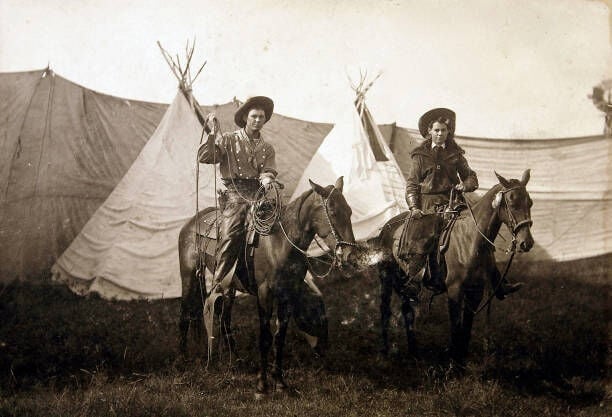
Judging by the guns, lassoes, gauntlets, and cowboy hats, we can imagine the type of performance that they would put on. The teepees in the background further suggest that there’s a storytelling element to their performance — but we’d have to be there to see it!
The Colder Side of the Wild West
How would you set the scene of a Wild West film? Perhaps there will be dust, intense heat, and sweaty men? You probably wouldn’t imagine a pile of slow delaying the construction of a railway line — but it happened!
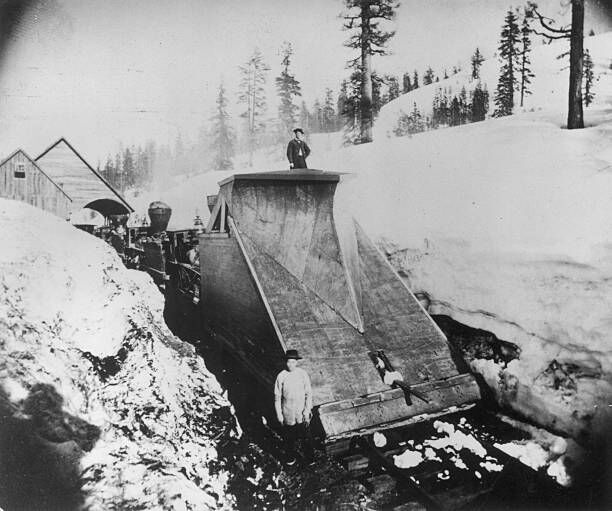
As this photograph from 1866 shows, snowstorms added an additional challenge to an already-harsh environment. During the construction of the Pacific railway, this railway line snow plow was called in to rescue the mission. Judging by the size of the plow — that’s some heavy-duty machinery!
The Woolier, the Better
With a cold stare and careful pose, we can only imagine that this handsome cowboy broke a few hearts during his time. Not only do his gold, tousled locks and smoldering gaze capture your attention, but his cowboy outfit proves that he means business.

While the lariat in hand, kerchief around his neck, great cowboy hat, and holstered revolver are all equally impressive, it’s the black wooly chaps that demand attention. We have no doubt that this cowboy’s legs will be very well protected from brush scrapings, injuries, and other environmental hazards.
The Power Held Within a Headdress
People are quick to associate large headdress pieces with native Americans, but not many are familiar with the honor of wearing one. The headdress is reserved for revered and respected elders who have earned the right to wear one through selflessness and leadership.
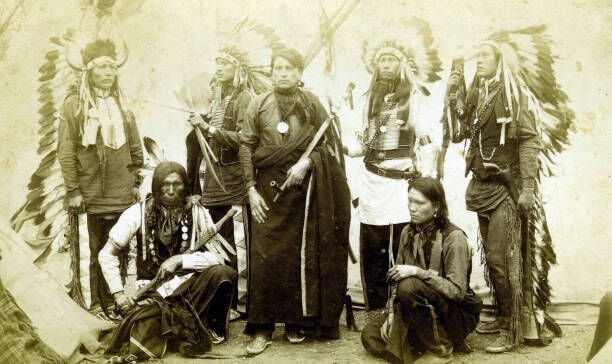
Buffalo Bill was familiar with this meaning and invited various chiefs to join his traveling show. The showman’s relationship with American Indians was complicated, but as this photograph from the late 1880s reveals, the chiefs would join him for performances — going as far as London — and beyond!
Buffalo Bill Wild West Show Arrives in Italy
The Wild West was a world of its own, living by its own set of rules and conduct. The traveling shows revealed parts of the Wild West with other parts of the world, and the audience lapped it up.
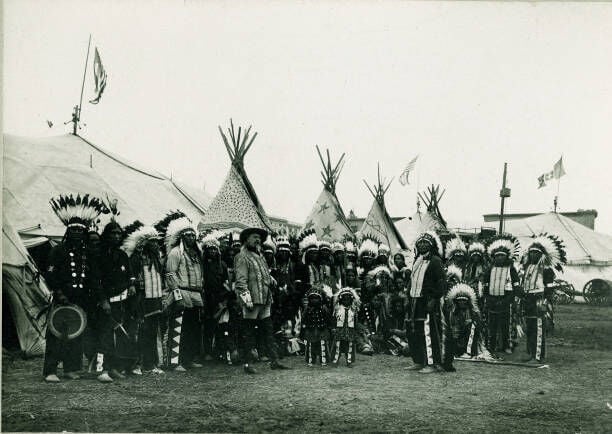
In 1890, Buffalo Bill and his performers arrived in Italy, and the show was an astounding success among the unaware foreigners. If you’re wondering what was presented to the international audience — then this photo should give you a good idea of what the captivated audience saw!
A Funeral Procession Honors a Sheriff
Streets in the Wild West were dusty and hot, and the ground seeped with bloodshed and tears that had been flattened by hooves. But the streets were also a place for community and triumph. This photograph from 1906 reveals one of the more endearing moments in Tonopah, Nevada.
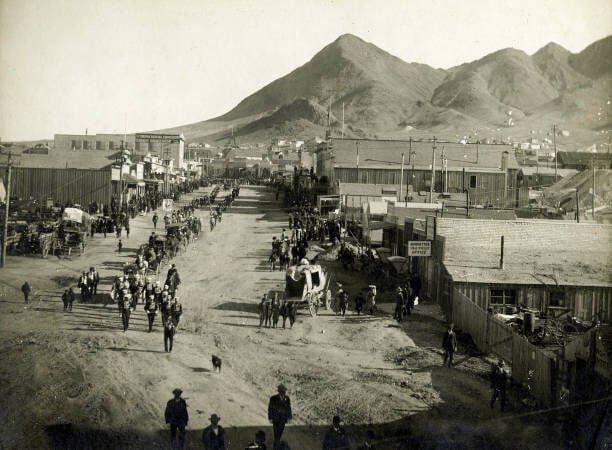
The photograph captures the funeral procession for Sheriff Thomas Logan who was shot and killed while coming to the aid of a saloon matron. The woman was being harassed by a drunk gambler and the brave officer came to her rescue, subduing the suspect until a deputy arrived. Unfortunately, he paid the ultimate price.
A Highly Valuable Wagon of Gold Ore
The Gold Rush had both positive and negative effects on the Wild West, aiding westward expansion. Tragically, there was a lot of collateral damage in the process, and people were driven by the lust for gold, no matter the cost. With this desperation and greed in mind, you can only imagine how the bystanders in this photograph felt seeing a wagon of gold ore cross their paths.
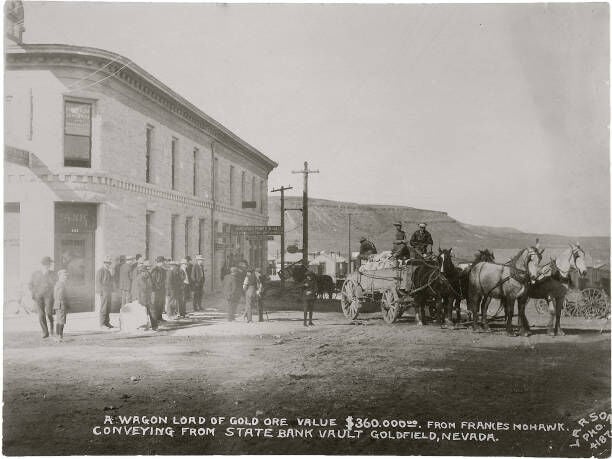
The photograph was taken in Goldfield, Nevada, and features a group of armed guards riding a wagon with a load valued at $360,000. Considering how many bandits roamed during the Wild West era, we can only hope that these guards were highly vigilant!
A TinType of Two Western Men
This photograph is highly detailed, pulling you into the men’s facial expressions, body language, and intricate surroundings. The tintype, which is a photograph taken as a positive on a thin tin plate, was captured circa 1885 and features two well-armed men — but the story is significantly more immersive.
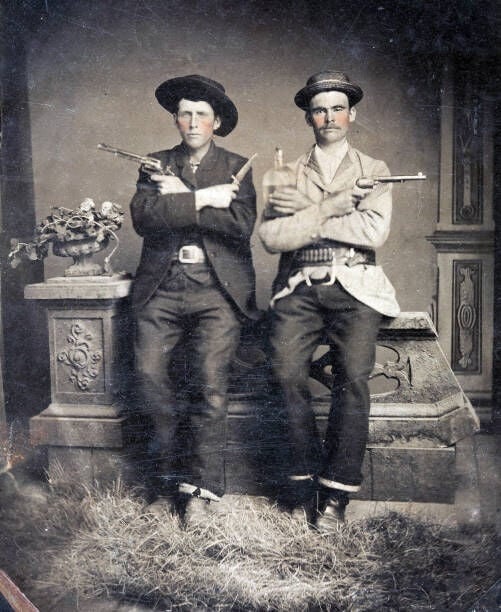
It’s tough to tell which of these two men is more intimidating. While both hold barrel colt single action revolvers, the man on the left also brandishes a bowie knife while his partner holds a bottle of whiskey and wears a cartridge belt. To be safe, it’s probably best to avoid them both!
A Bandit Queen on Her Trusty Steed
It wasn’t only men who wore bandanas and terrorized communities. Belle Starr was a female outlaw who earned a terrifying reputation. In 1886, a photographer got close enough to take this photograph of the bandit queen sitting side saddle on her horse — and she’s gloriously mysterious.
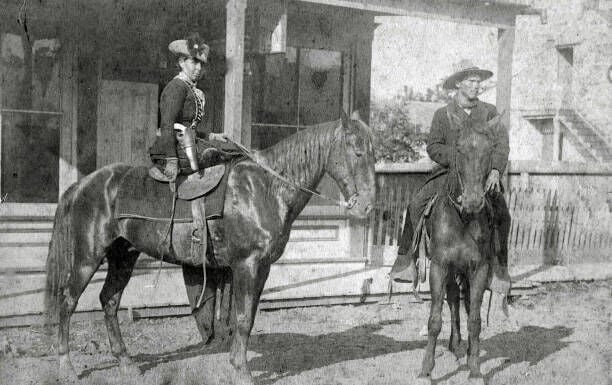
Belle Starr’s success as a bandit is apparent in this photograph, as she flaunts a single loop holster with a pearl-handled revolver in it. With a riding crop in her left hand and leather gloves, it’s easy to understand how she earned her status.
The Rapid Expansion of Nevada Street
If you’re wondering what everyday life looked like during the Wild West, then this photograph of Main Street in Manhattan, Nevada, should offer a basic understanding. Snapped in the early 1900s, this photograph shows how the town appeared before it rapidly expanded to accommodate an influx of settlers.
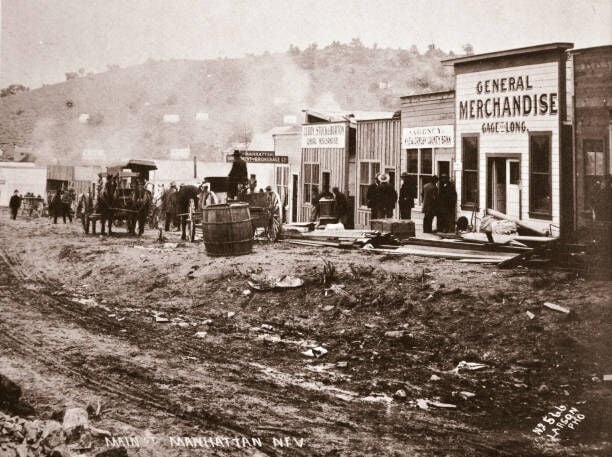
Manhattan was founded in 1867 with the nearby discovery of silver, serving as a community base for miners and their families. In 1905, gold was discovered and over 4,000 people flocked to the area, hoping to strike it rich.
It’s Every Woman for Herself
It wasn’t easy to survive in the Wild West. A combination of disease, environmental hazards, accidents, and bandits made the American Wild West a tough place to live, and it was every man — and woman — for themselves.
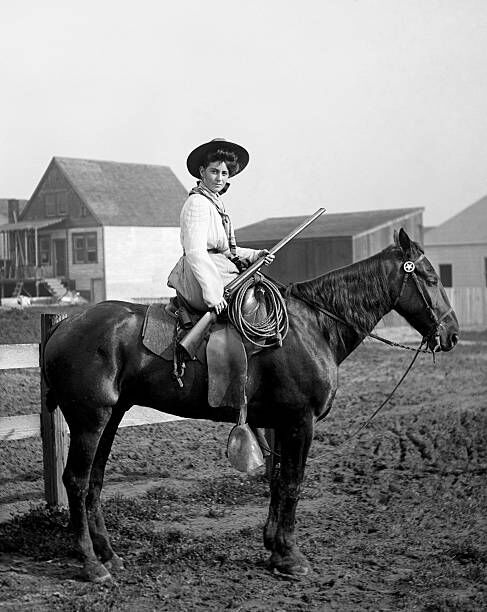
This photograph, taken circa 1905, shows a typical woman in the Wild West, straddling a horse while armed with a double-barrel shotgun. With piercing eyes, a cowgirl getup, and a serious demeanor, we have no doubt that she knows how to fire her weapon too!
Preparing for a Treacherous Trip
The Wild West was a period that had the main goal of expanding the frontier. People followed the gold and formed new settlements with each mission for expansion. In this photograph taken in 1867, we get a glimpse into what this lifestyle looked like for the people at the time.
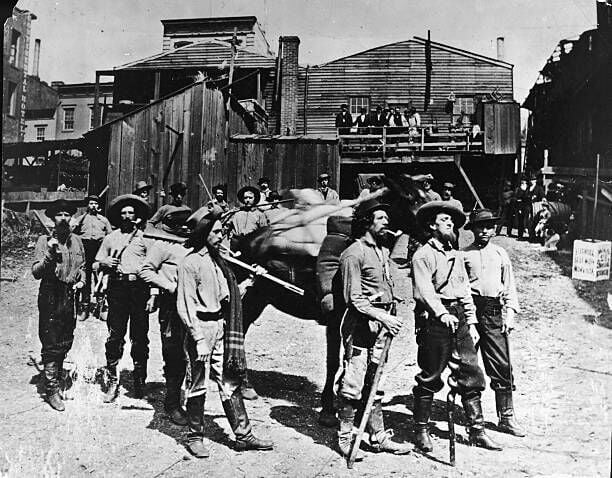
In this photograph, a group of prospectors prepares to hunt for mineral deposits. Uncertain about when they will strike gold, they have packed their heavily-laden horse with equipment and supplies, ready to explore (and excavate) the Northwest regions of the United States.
Adding a Little Bit of Style to the Cowboy Attire
When cowboys and Wild West characters weren’t exploring the territory or working the mines, then they were most likely gambling at brothels where a combination of alcohol and boredom often led to violence.
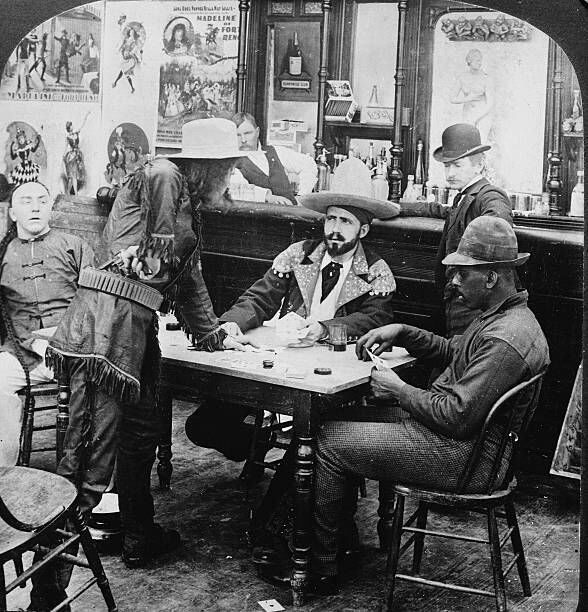
The characters in this photograph, taken in the early 1900s, show a group of gamblers on the verge of an argument. The man in a stylish, fringed leather jacket and cowboy hat hovers his hand over a revolver, suggesting that his ready to prove his point with a gunfight. During the Klondike Gold Rush in Alaska, this was a typical scene.
Queen of the Wild West - The Amazing Story of Annie Oakley
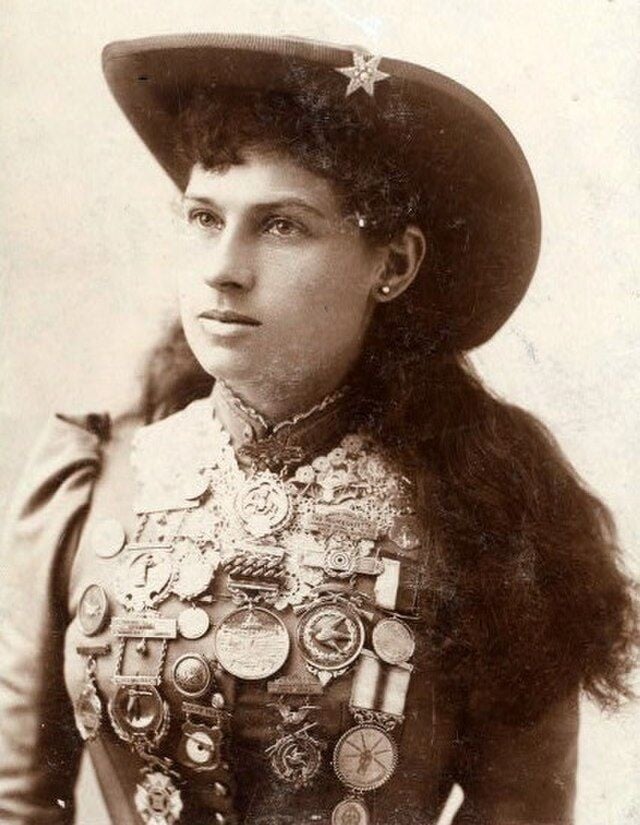
In the American Old West, owning a gun was essential for survival. Things were quite haphazard back then, so security wasn't as tight as today. Some people stood out when it came to handling a gun, and they're referred to as sharpshooters. One of these people happens to be the remarkable Annie Oakley, whose story makes anyone want to know more about her. Saying that Annie was a cut above the rest is an understatement. This lady was in a league of her own. From shooting smokes out of people's mouths to splitting cards, Annie did nothing wrong. So here are some interesting facts about our pioneer sharpshooting lady.
Oakley Is Not Her Real Name
Ms. Oakley was the fifth born in a family of seven in rural Darke County, Ohio. For your information, Annie Oakley's name is not her birth name; she was born Phoebe Ann Moses. The name Oakley was derived from an Ohio town near her hometown.
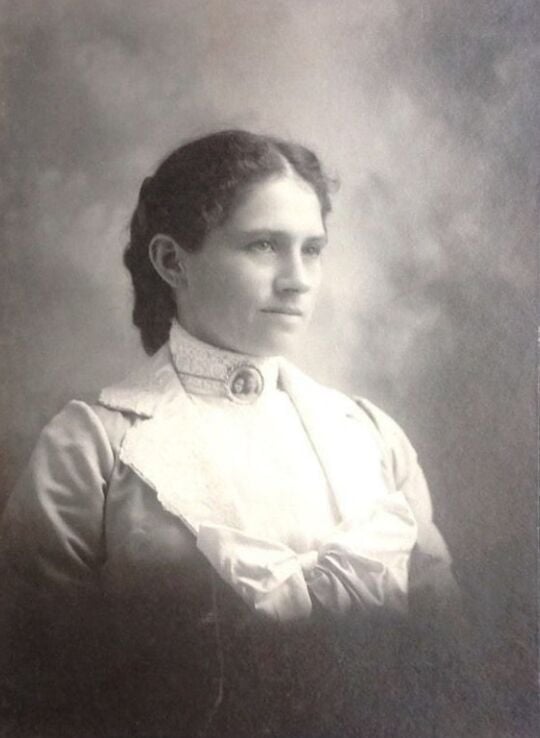
As for Annie, it came about after her sisters decided to call her Annie instead of Ann or Phoebe. Surprisingly, despite being an iconic figure of the American frontier, she spent most of her formative years in Ohio.
T'was a Family of Trappers
Annie's family was big on hunting and trapping. Her father was her primary role model, and the young girl would always accompany him to his hunting exercises. This early exposure played a big part in making Annie comfortable around guns and hunting expeditions.
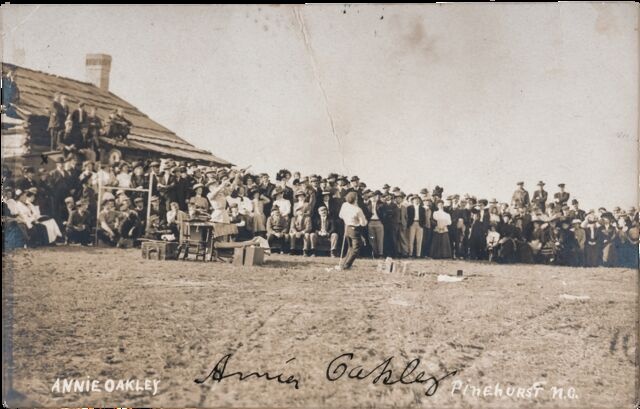
Therefore, at the tender age of eight, Annie got her first prey. The little one balanced her father's rifle on their porch rail and shot a squirrel across the yard. It was a clean headshot, and Annie said it was her best shot ever. Her love for guns went beyond just passion, she believed all women should know how to shoot a gun and taught around 15,000 women in her lifetime. She said: "I would like to see every woman know how to handle guns, as naturally as they know how to handle babies."
That's Not What Women Do
Annie's mother was mortified when she learned of her daughter's actions. This was an eight-year-old handling a gun, so there are many ways the scenario would have ended tragically. With her daughter's best interests at heart, Annie's mother barred her from touching the rifle for eight months.
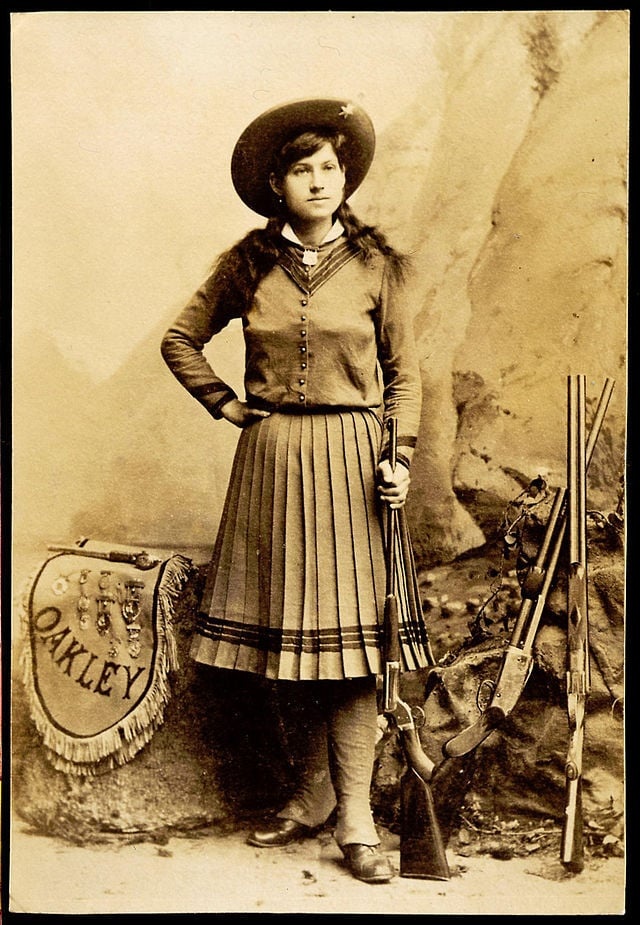
Additionally, this was uncharacteristic for girls at the time. Shooting and hunting were predominantly male-dominated endeavors, so it was odd for the family to have one of their daughters engage in the activity. This setback didn't dampen Annie's spirit; in fact, things went up a notch.
After the Big Ban
After Annie's rifle ban, she went back to shooting like never before. The young one had an affinity for marksmanship, so there was no way she could be swayed against it. Moreover, Annie was so good at hunting and shooting that she could use her skills to put food on the table.
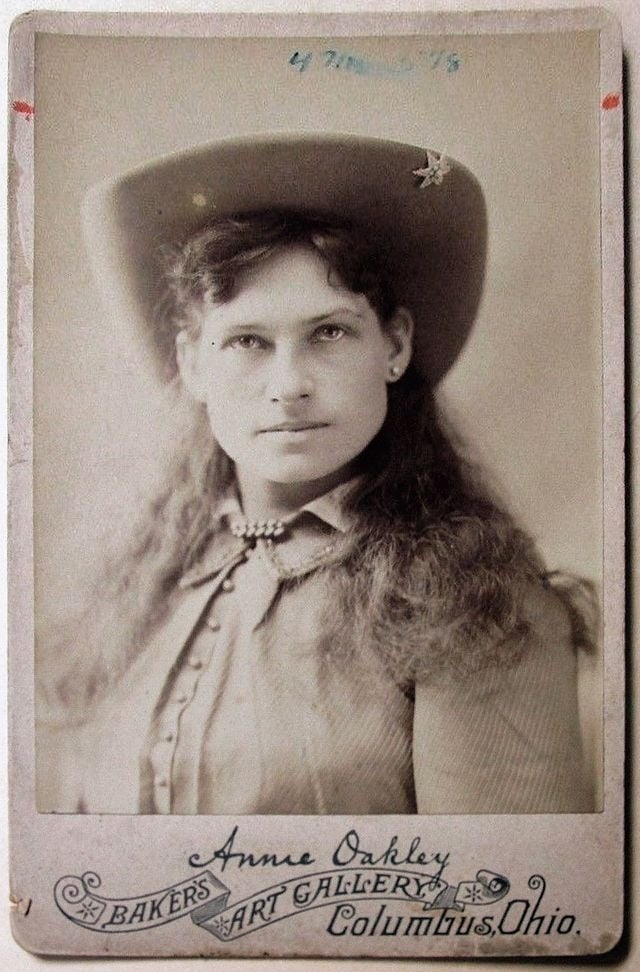
Sadly, Annie's father passed away, leaving her mother in dire straits. This forced the woman to send Annie to work or for someone else in exchange for education. This arrangement was short-lived as Annie decided to return home after dealing with an abusive household.
Taking Matters Into Her Own Hands
Once Annie returned home, she decided to focus solely on shooting. It was a gamble, but it paid off. She continued hunting animals and sold the meat at a local grocery store. The business deal was so good that the young lady could pay off her mother's $200 mortgage.
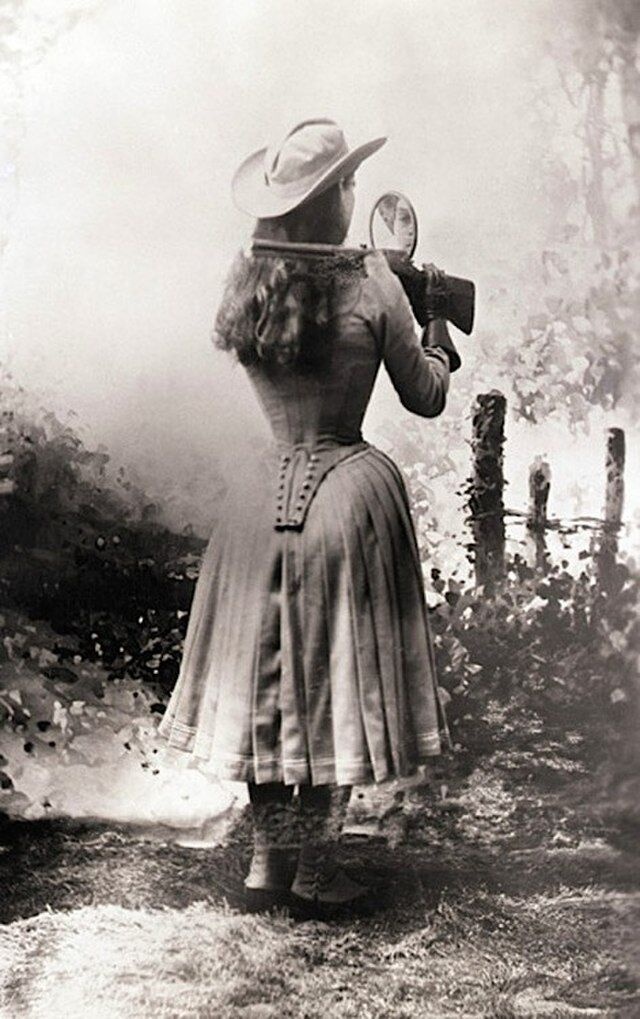
This moment was a big deal for the young girl as she couldn't hide her joy when she handed her mother the money. Finally, she had saved enough to free them from the debt hanging over their heads. Unsurprisingly, this was just the beginning of Annie's fantastic life events.
Annie the Shooting Prodigy
At only 15 years old, Annie participated in a Thanksgiving shooting match. After years of hunting wild game, Annie was a force to reckon with, so a shooting competition was not an uphill task for her. The lady showed up in Cincinnati, and Frank Butler was her competitor.
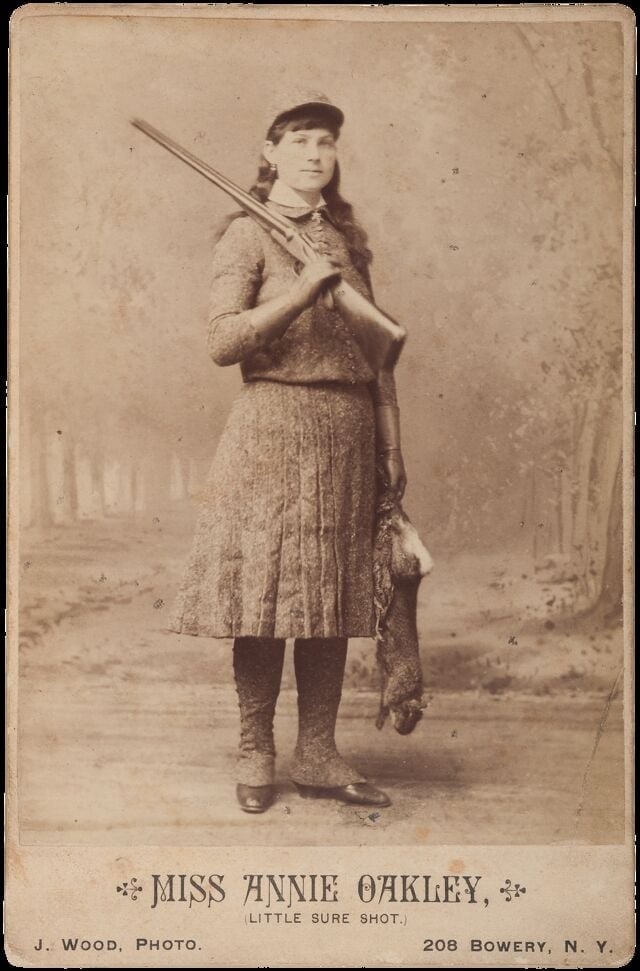
Frank looked down on the young girl, even placing a $100 bet against her. This led to a painful experience as Annie cleared the whole course with zero misses and clinched the title. Frank was no match for Annie despite being an expert marksman, as he missed one clay pigeon.
Cohabiting With the Competition
Frank was impressed by Annie's skills despite losing $100 and the grand prize. So much so he was taken with the young lady. A year after the competition, Frank and Annie got married. By all means, this is an impressive feat as Annie beat her husband in a shooting match, and we can't help but wonder how healthy trash talk was in the family.
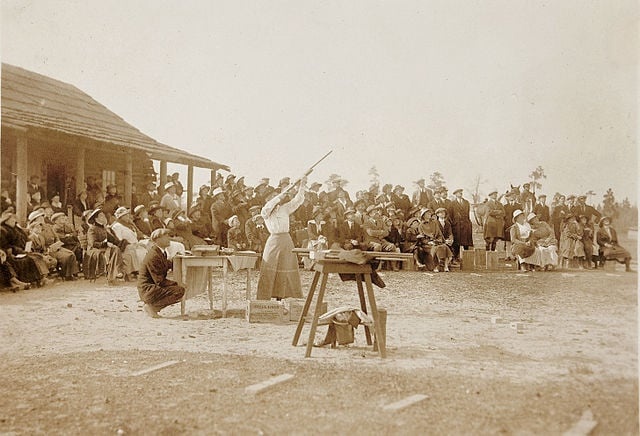
The couple was an item throughout their lives totaling at least five decades. Surprisingly, Annie passed away in November 1926, and her husband followed her to the afterlife 18 days later,
A Lady Through and Through
Interestingly, Annie's career path didn't affect her nature. The lady was feminine through and through. Even when she attended various competitions, she dressed in cute dresses and skirts. Most of her attire was handmade, and she maintained her feminine modesty. Additionally, her downtime hobbies included embroidery and other feminine activities.
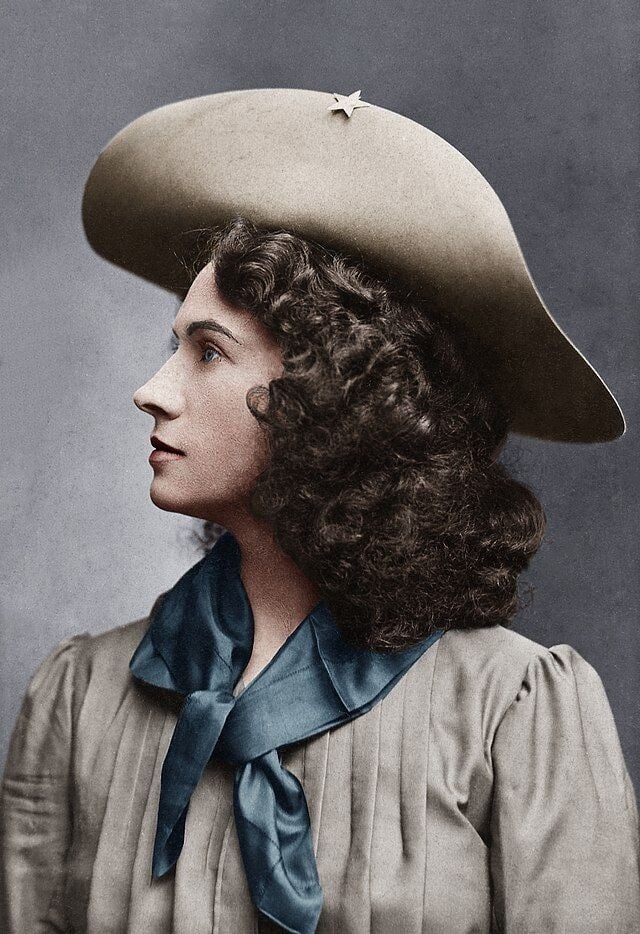
This is probably one of the reasons the lass enamored frank. After all, who can fight the charms of a beauty who can handle her guns? It was the Wild West, so simple things went a long way.
She Nearly Died
In 1901, Annie was almost crushed to death in a violent train accident. After suffering from paralysis and five grueling spinal operations, she was on the road to recovery.
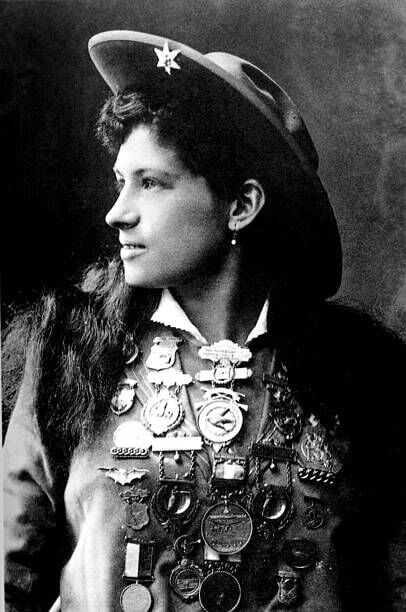
Although Annie's life was short, this accident nearly killed her at the young age of 41. She was back on tour by 1902 and didn't let the accident slow her down.
Big Things Come In Small Packages
Annie's reputation might have you thinking she was an Amazon of a woman, but that couldn't be farther from the truth. The talent was only five feet tall, but boy did she make up for it with her shooting skills. This paradox made her stand out from other performers.

After his marriage to Frank, Annie toured with the man pulling in large crowds. They mainly focused on circuses, and the couple was aptly referred to as the sharpshooting double act. Eventually, Frank retired and dedicated his time to managing his wife as a solo act.
Some Nifty Tricks Under Her Sleeve
Annie's shooting skills were ahead of her time. The level of proficiency and accuracy was so astounding it was hard to imagine you were looking at a live show. There must have been some trickery afoot, right?
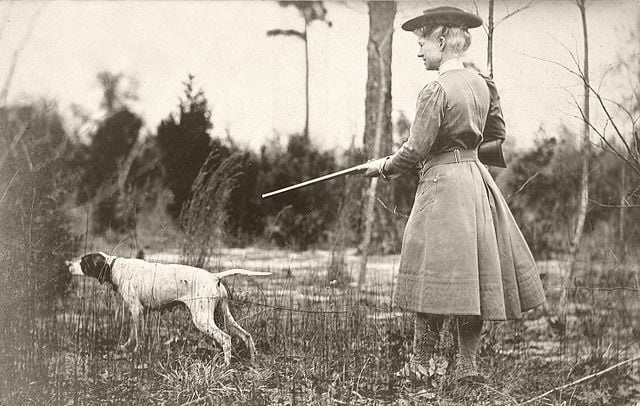
For context, Annie could shoot coins out of the air at pinpoint accuracy. If that weren't enough, she'd shoot lit cigars from Frank's mouth. To turn things up a notch, Annie would take 30 paces before shooting a playing card, casually splitting it in two. At some point, Annie was so good that she could hit targets behind her by using a mirror as her guide.
A Luck Would Have It
Anyone familiar with Annie's story knows she mostly performed at a Wild West show organized by the legendary William Cody, aka Buffalo Bill. This working relationship did not start immediately as Bill was hesitant to hire the talent. It wasn't personal, as the man thought it didn't make sense for his show to have two sharpshooters lined up.
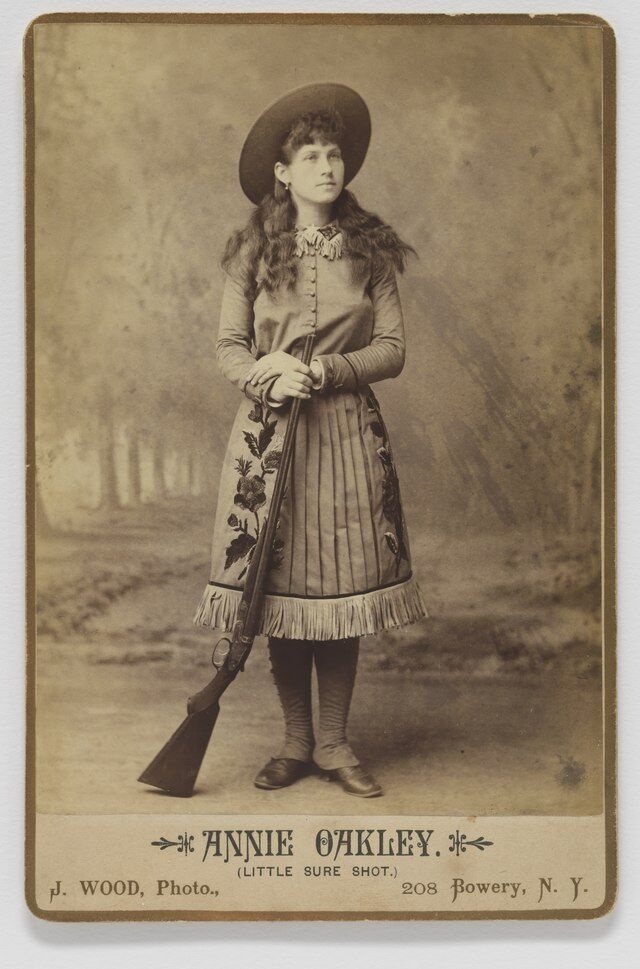
Captain Adam Bogardus was the star attraction at the time, and he was good at his job as a marksman. Unfortunately, adding Annie to the troupe would bring about a conflict of interest, thus hampering the business.
Clouds and Their Silver Linings
Annie continued freelancing until 1884 when tragedy struck at the Mississippi River. A steamboat carrying Bill's performers sank to the bottom, and that was the beginning of the end for Captain Adam Bogardus. Despite everyone making it safely to shore, the marksman's guns didn't, which was a problem.
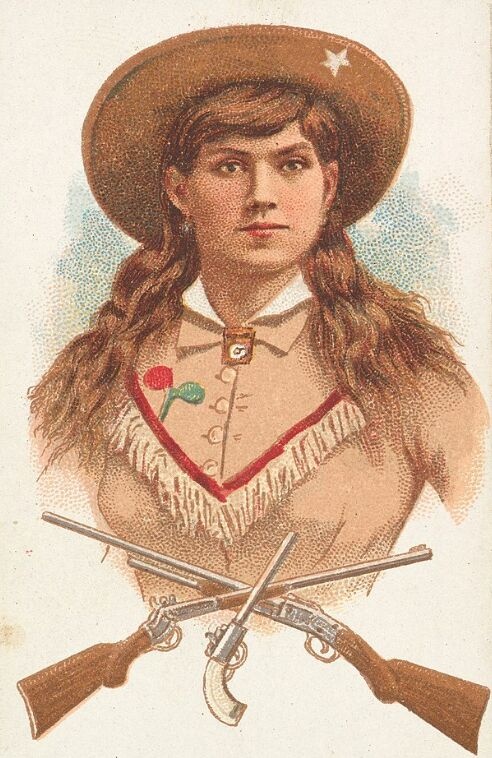
Adam had a tough time adapting to a new set of guns while his equilibrium was off. This situation lasted for several months, and Adam had to count his losses. This departure created a vacancy in the troupe, and Annie was the obvious choice.
That's How She Met Sitting Bull
Sitting Bull is revered as one of the most iconic Native American leaders of his time. He is most revered for his victory over General Custer at the Battle of Little Bighorn. With such an impressive battle resume, we'd be surprised if anything gun-related would surprise him.
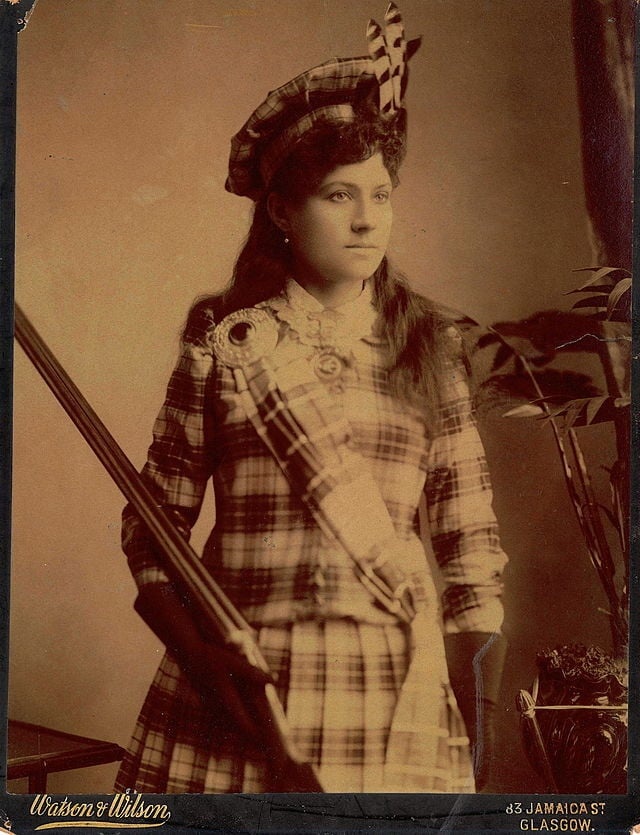
Anyway, we are talking about Annie Oakley here, so we can't expect anything less than a twist in the tale. As soon as Bull witnessed the lady's shooting, he was sold. He was so impresed, as a matter of fact, that he offered the legendary woman $65 just for the chance to sit for a photo with her. Who can blame him, though? Annie's feats have us in awe, yet we haven't seen them in person. Imagine Bull's experience.
A New Father Figure
After witnessing Annie's work, Bull sent the lady $65 to her hotel, hoping to get an autograph. Annie was flattered by the gesture, but she returned Bull's money with an autographed picture. This level of modesty and kindness touched Bull; he insisted he should adopt her.
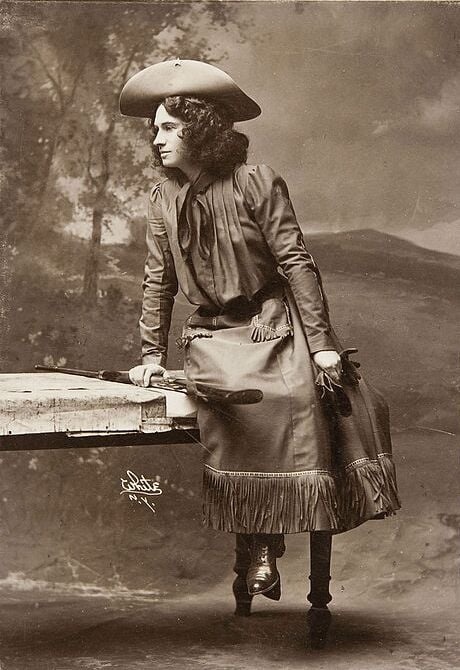
Bull gave Annie his prized moccasins and christened her Watanya Cicilla, which roughly translates to Little Sure Shot. The following year, Bull joined Bill's troupe for four months, allowing him to get closer to Annie. Annie wrote fondly of Bull, calling him a faithful old friend whom she respects and adores.
She Was an International Sensation
Oakley's time at Buffalo Bill's Wild West Show brought about some high moments. At one point, the troupe toured Europe, which was one of their most successful ventures. The show drew in large crowds, and at one point, Kaiser Wilhelm II was in the audience.
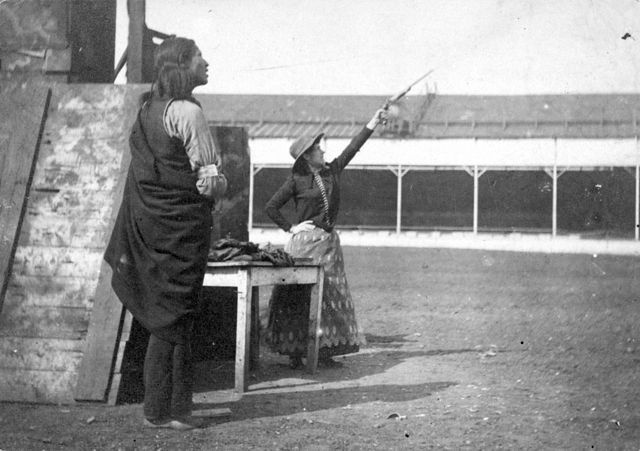
Annie incorporated him into her act by shooting ash from a cigarette he was smoking. Wilhelm wasn't the only royalty to attend. Queen Victoria also became one of Annie's fans after attending a show at the American Exposition in London.
The Queen Is a Fan
Queen Victoria had such a fun time telling Annie she was a very clever little girl. So the party continued touring Europe, from England to the Paris Exposition. They eventually made their way to Italy and then Spain.
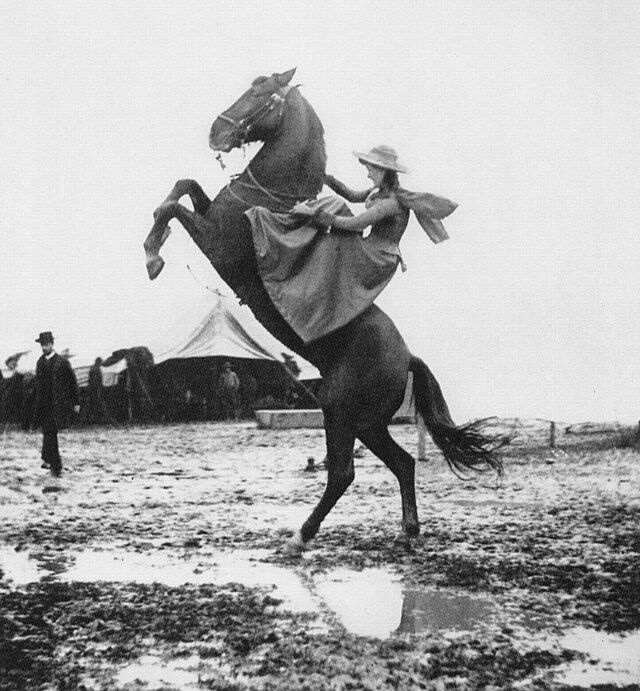
Annie Oakley was a hit with the population, and the press couldn't have enough of her. She was welcomed by a massive crowd of fans and journalists wherever she landed. Even the king of Senegal took notice of her talent and asked the sharpshooter to help his country control the tiger population.
For the Love of Flag and Country
Sadly, the Spanish-American War began in 1898, leading to a sad state of affairs all over the nation. Annie was pretty patriotic, and she felt her skills could come in handy. The talent requested President William McKinley to let her chip in the war.
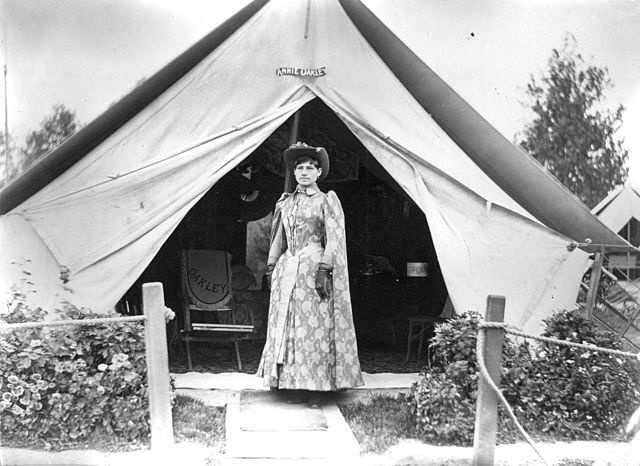
In her petition, Annie proposed she could set up a female regiment of 50 lady sharpshooters. The ladies would have their ammo and guns and would fight for America. Unfortunately, as good a deal as this was, she never got a reply. This wasn't the last time she'd push to fight for her nation.
Another War to Try Out
When World War One broke out, Annie was ready to dive into the frontlines for the flag and country. The deal was similar to the previous one, but she reached out to the U.S. Secretary of War this time. She got no feedback like the last time, but Annie didn't give up.
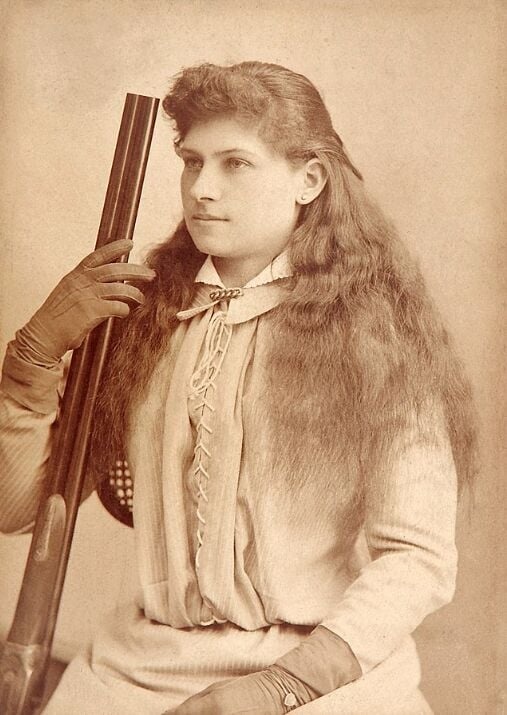
The lady visited army camps to help out however she could while simultaneously raising money for the Red Cross. Additionally, Annie volunteered in various military charities to aid in the war effort. Where there is a will, there is a way.
Some Funky Business Is Afoot
These days, false information is so rife that it's hard to know what's real and what is not. Luckily, this also means most information making its way to the press can be treated with some element of doubt. Sadly, in Annie's days, the press was treated as gospel, so any information coming out could have some untold repercussions.
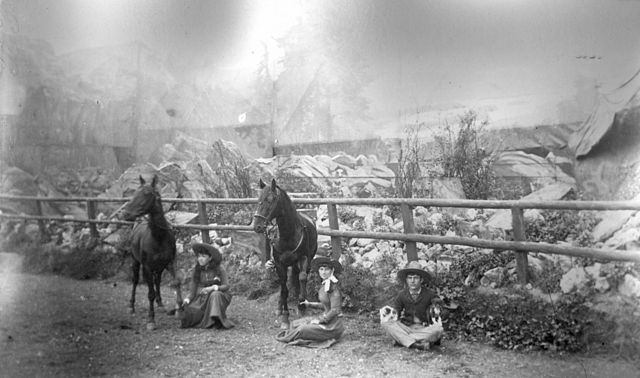
In 1903, a couple of newspapers owned by William Randolph Hearst dropped some bombshells regarding Annie's private life. The allegations were so preposterous the lady couldn't take the information lying down.
Tough Times Ahead for Annie
According to the newspapers, Annie had a substance abuse problem, and she was arrested for stealing a man's pants. This hit piece had devastating effects on Annie's health and mindset, and she knew she had to make sure she set the record straight.
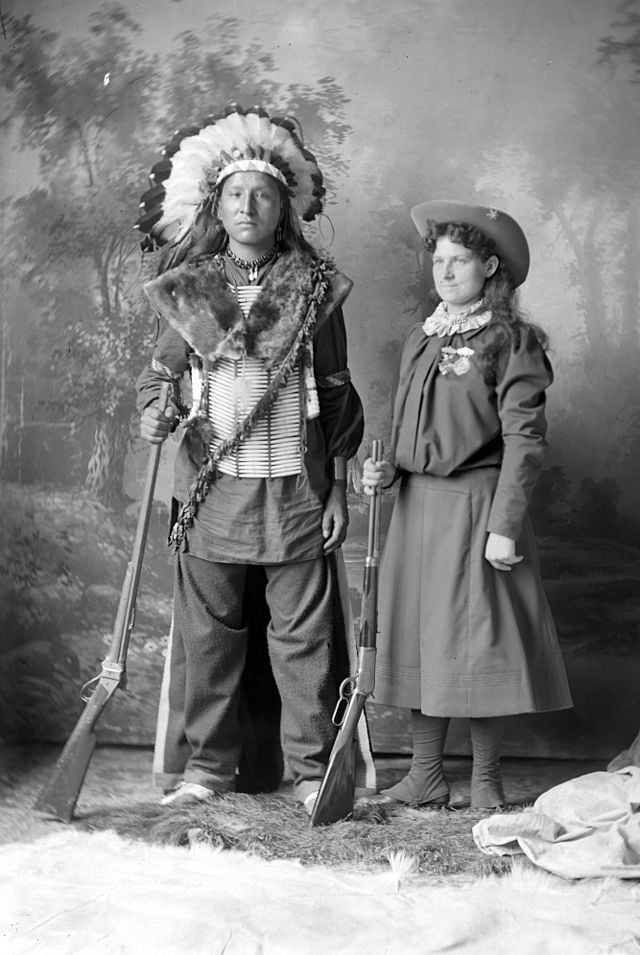
Annie once said that the piece almost drove her over the cliff. Her drive to clear her name was what kept her going. It would be a challenging and expensive battle, but she was ready to fight tooth and nail to save her reputation.
The Truth of the Matter
After some digging, it was revealed that the lady who had been arrested was a burlesque performer whose name was Any Oakley. The lady was based in Chicago, and Annie hadn't been there since the previous winter. Nevertheless, various newspapers printed the information leading to more damage.
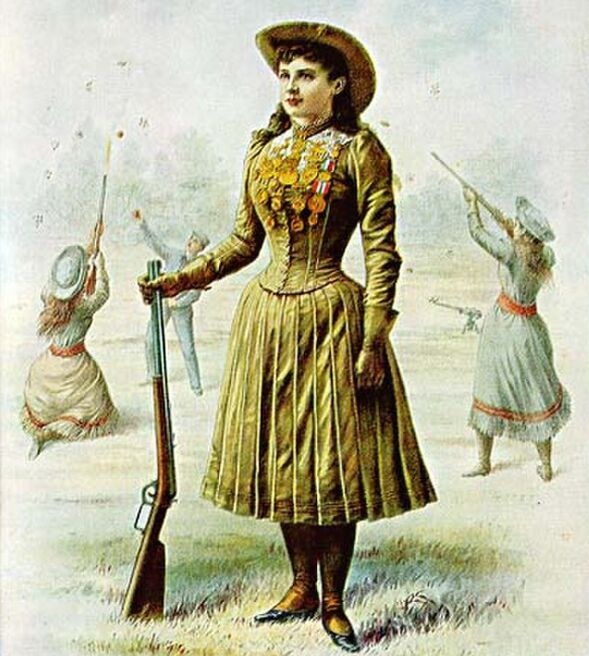
Usually, most publications released retractions, but Hearst was difficult, and he didn't want to lose face. So instead of finding an amicable solution, the man hired a private investigator to find some damning information about our iconic/ modest legend.
The Biggest Case of All Time
Meanwhile, Annie had vowed to get retribution for her situation, so she spent the next six years pursuing 55 libel cases. She settled 54 of them, and Hearst was forced to pay her $27K. Despite the big win, the cases had taken too long, causing her to spend more money than she had won.
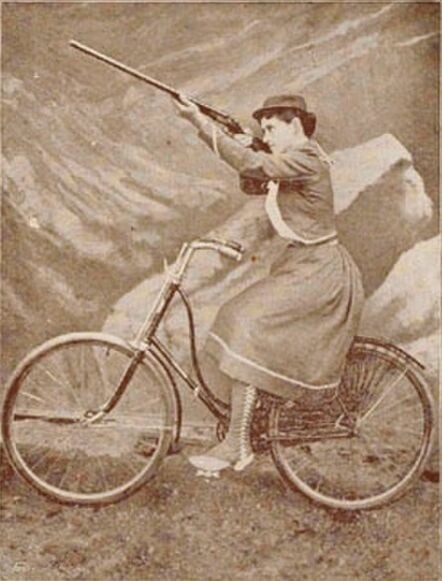
At least her name was cleared, and she got the justice she deserved. Enough of the dark times; let's get back to the good vibes now, shall we?
She's a Wimbledon Legend
Before Wimbledon became the tennis haven it is today; the area was reserved for the biggest shooting summer event. Annie performed in a rifle competition on Wimbledon Common. The show was set up as part of Queen Victoria's Golden Jubilee celebration. The press loved Annie, and everyone considered Annie the best shot in the competition.
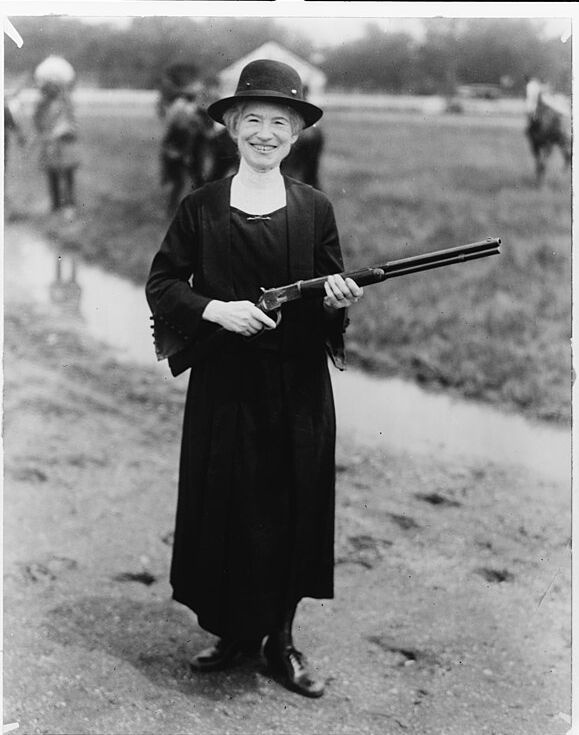
Thomas Edison also met Annie Oakley, and this meeting made the talent a film actress. Annie showcased her skills for Edison's Kinetoscope, resulting in a film called The Little Sure Shot of the Wild West. Annie didn't pursue a career in acting, but she featured in The Western Girl, portraying a sharpshooter two years in a row.
Her Biggest Triumph Ever
Annie's shooting skills became so synonymous it was hard to think of the sport without her. So in most shows, they started punching holes in free tickets to separate them from the paying customers. If you recall, Annie would shoot holes in playing cards, so these tickets resembled Annie's cards.
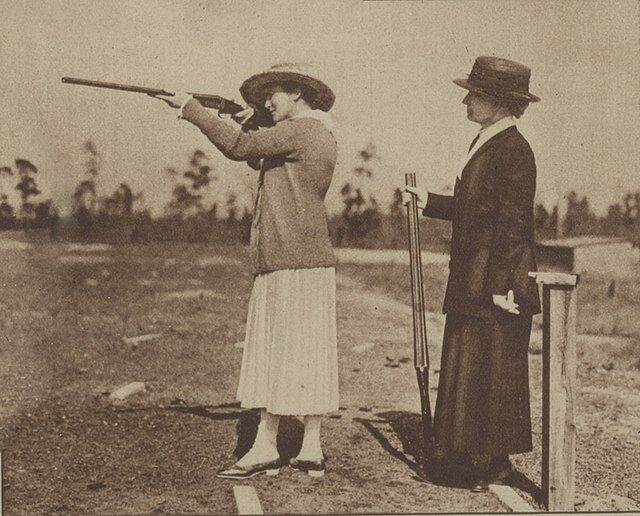
After a while, the resemblance caused people to refer to the free tickets as Annie Oakleys. This idiom has evolved so much it even made its way to baseball. In this sport, Annie Oakleys refer to a walk because it refers to a free pass when heading to first base. So there you have it, that's Annie Oakley, the legend.
No comments:
Post a Comment